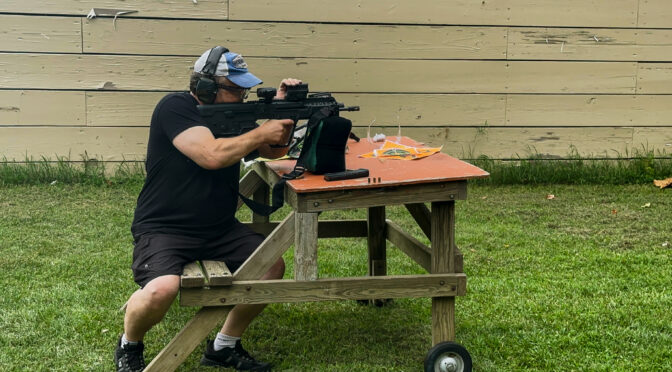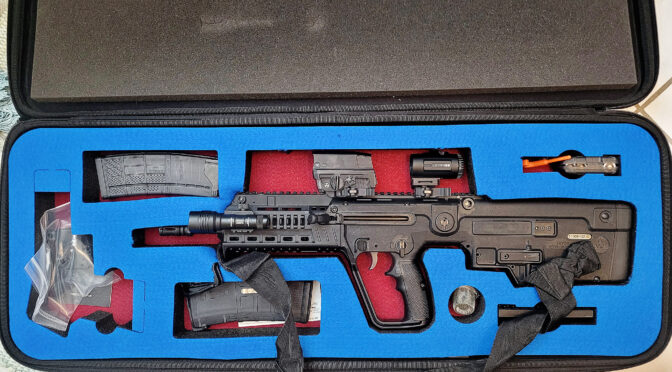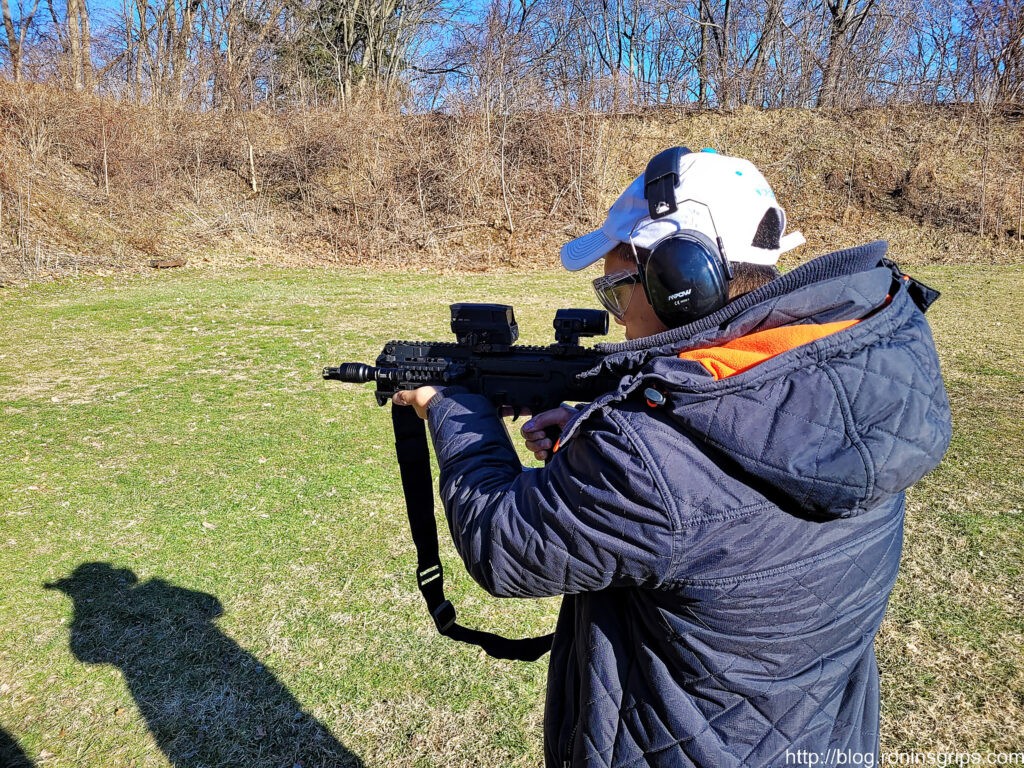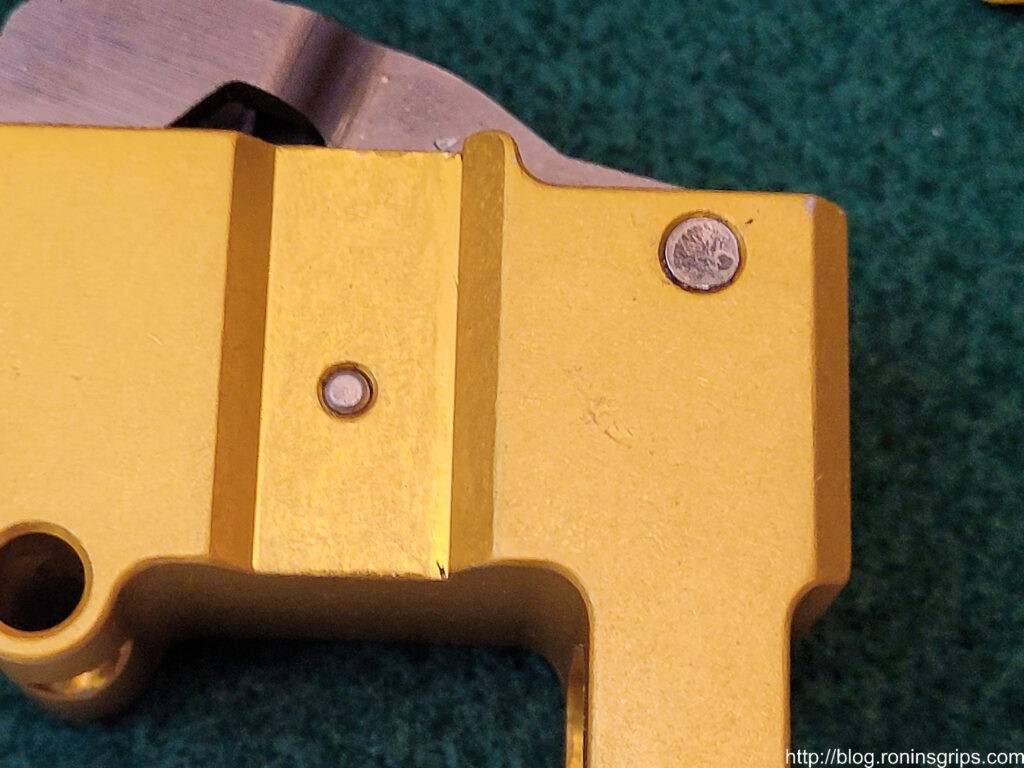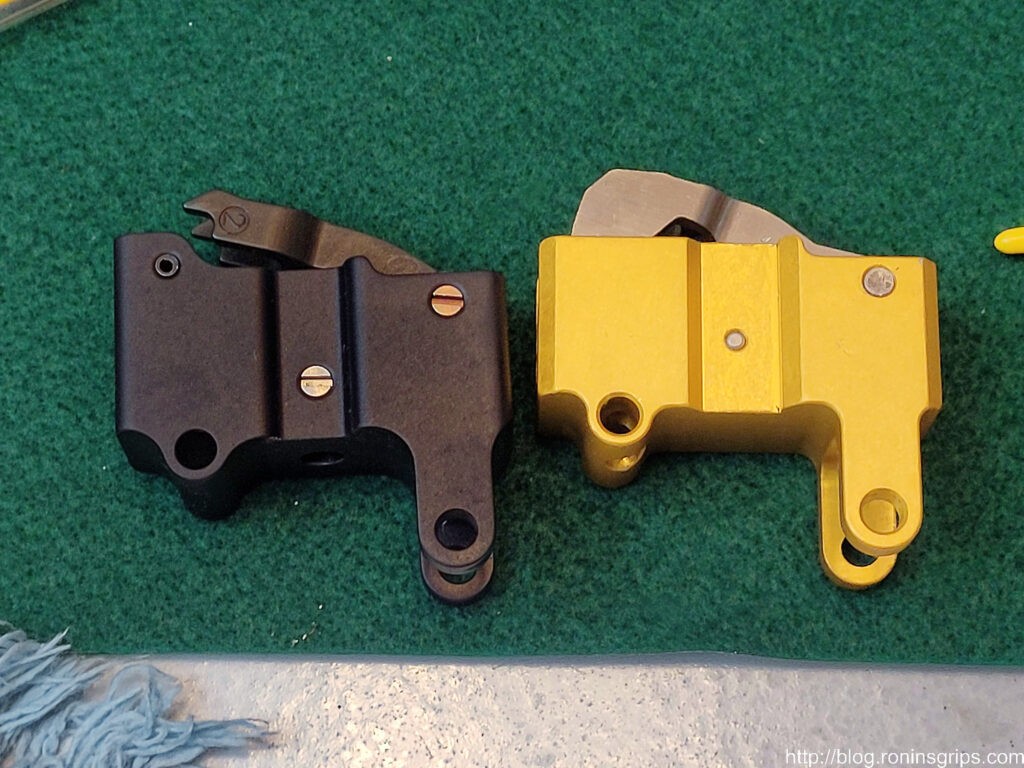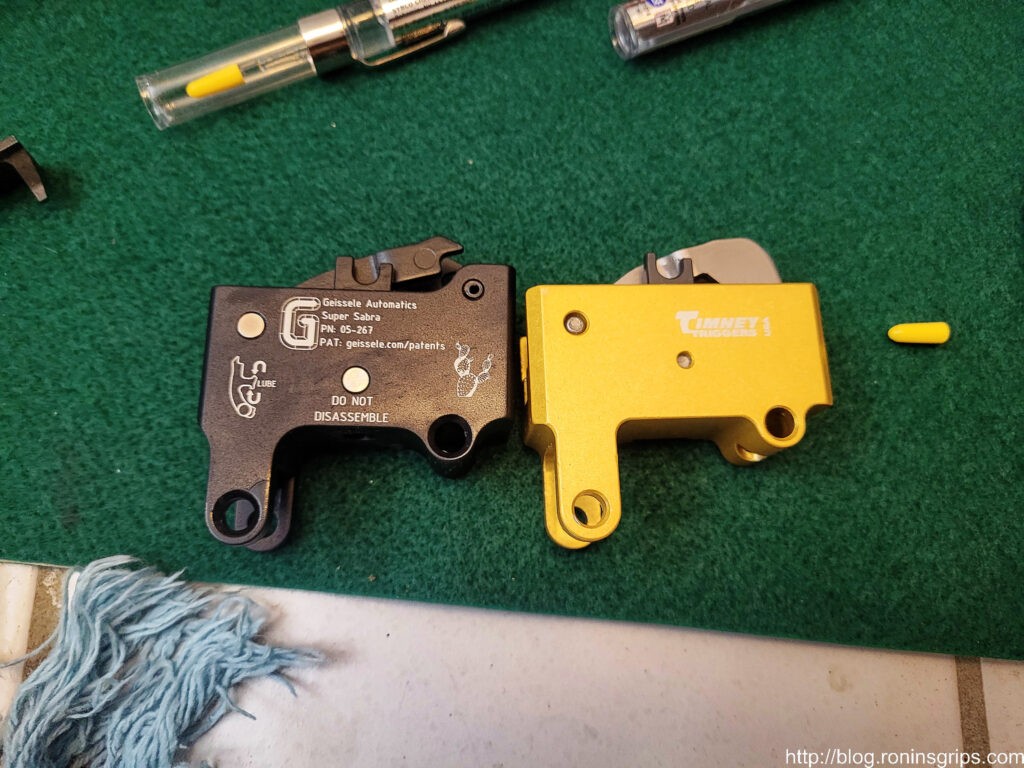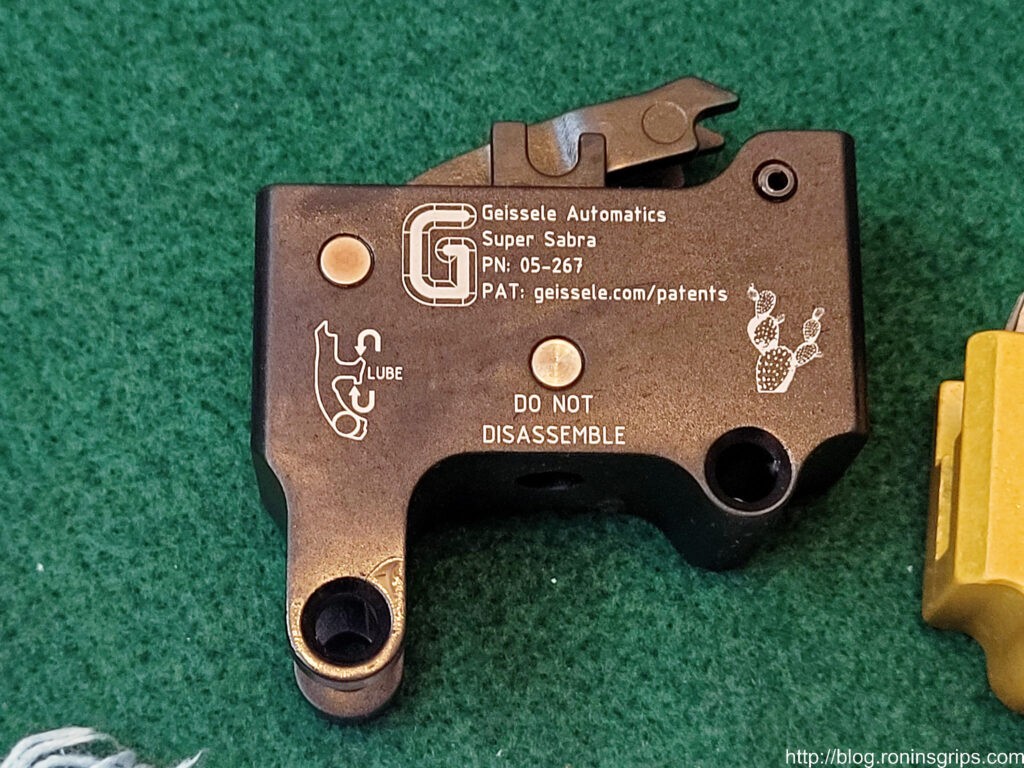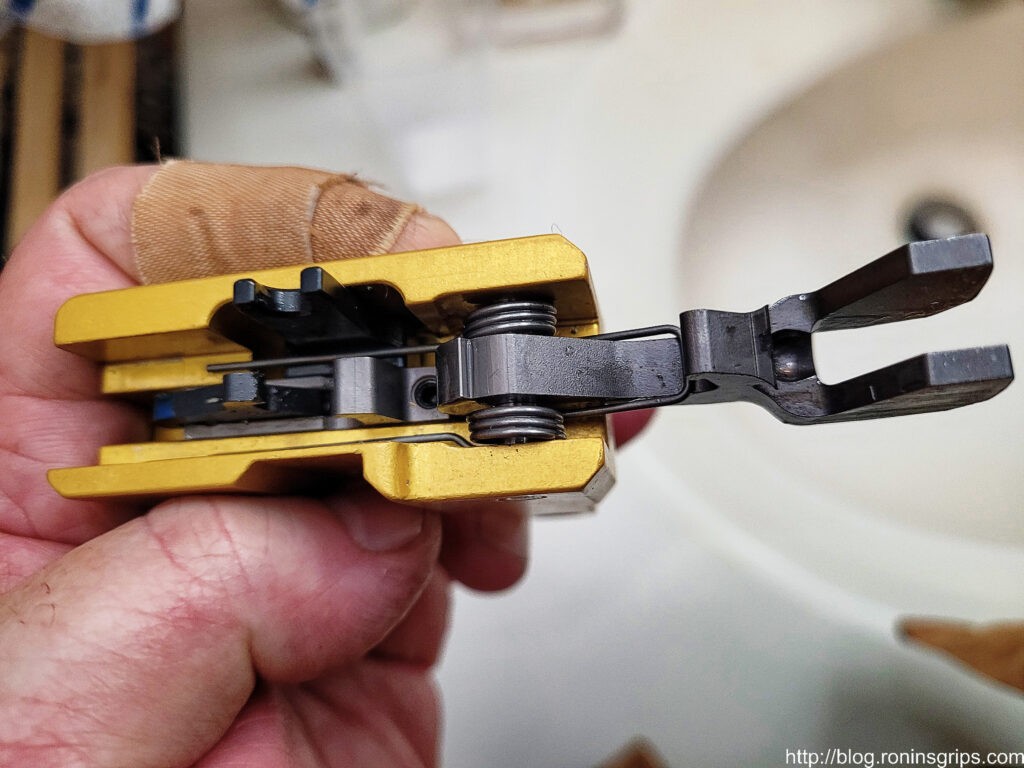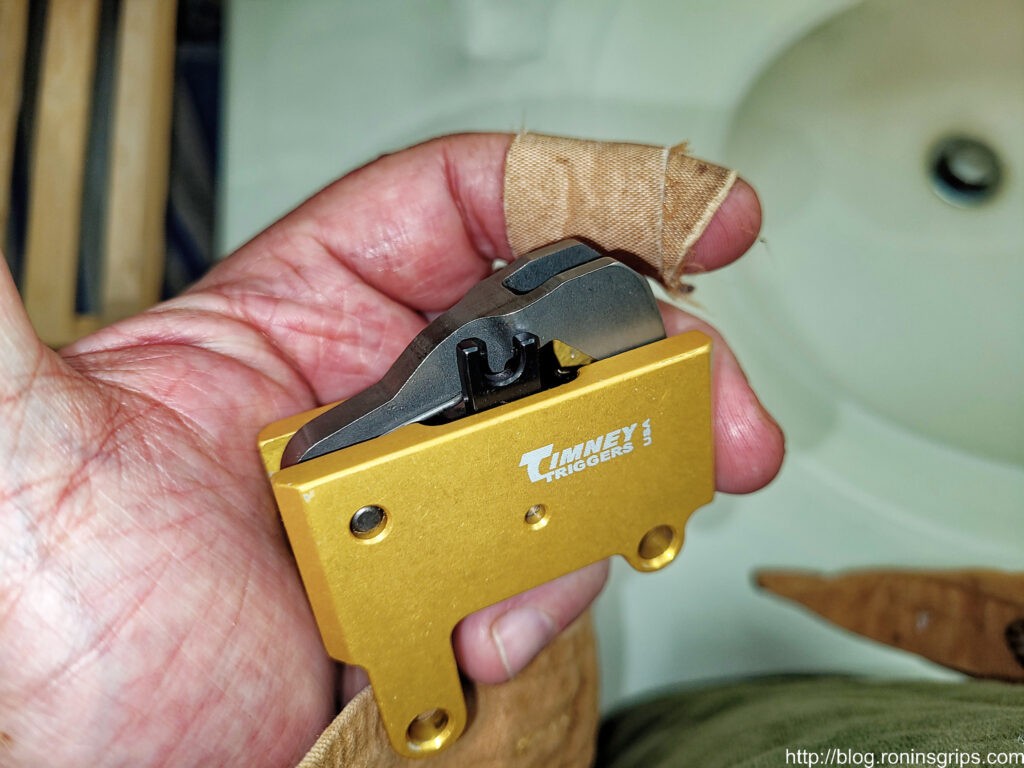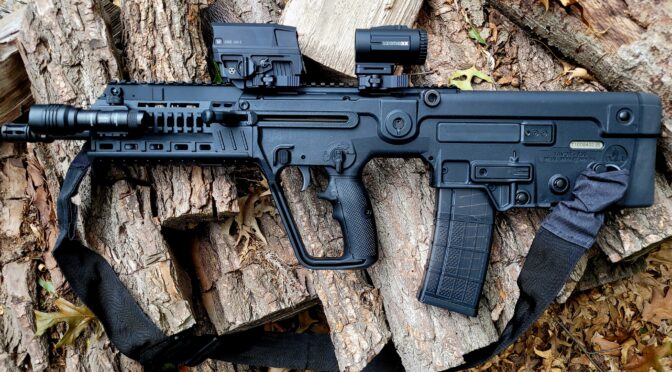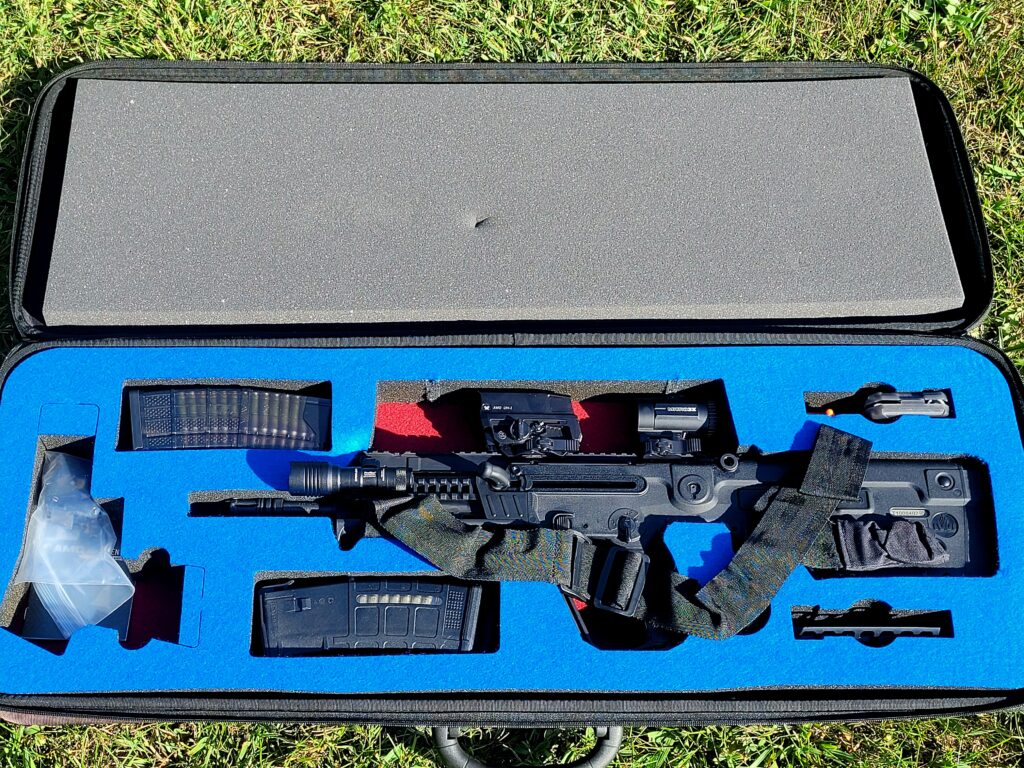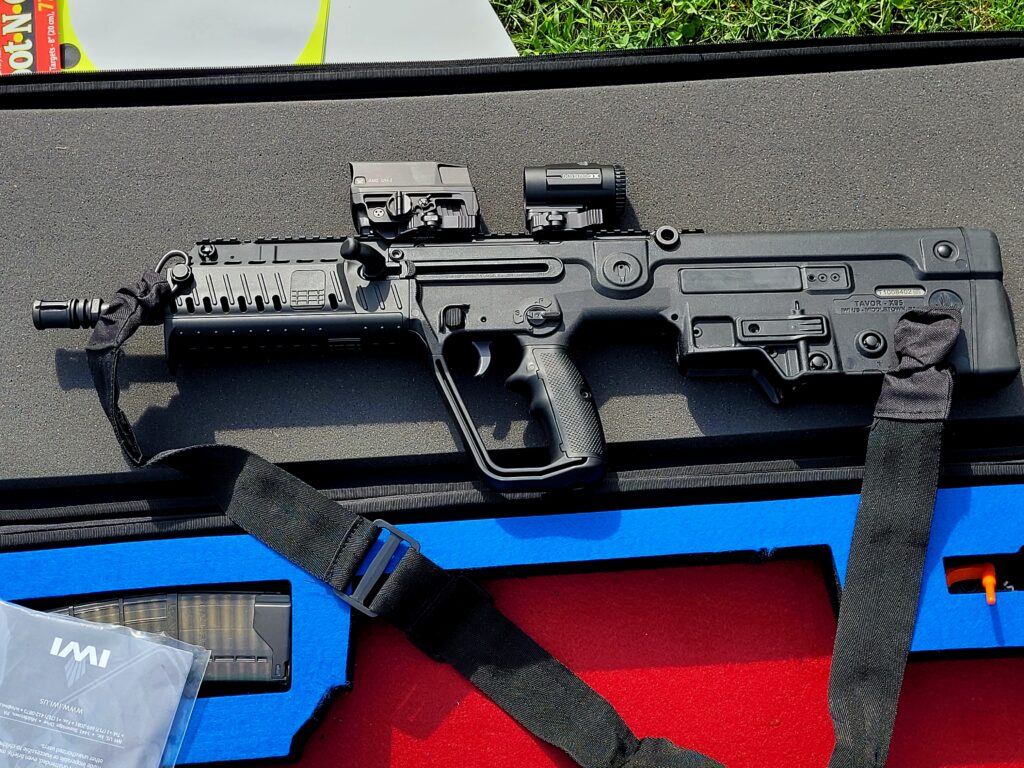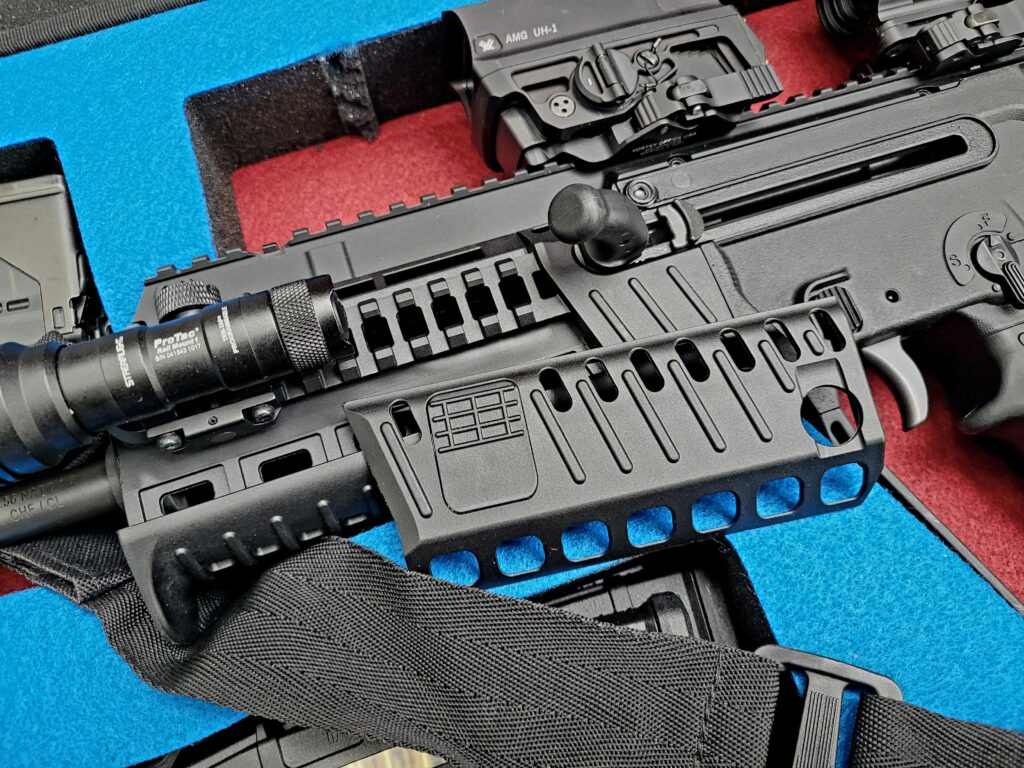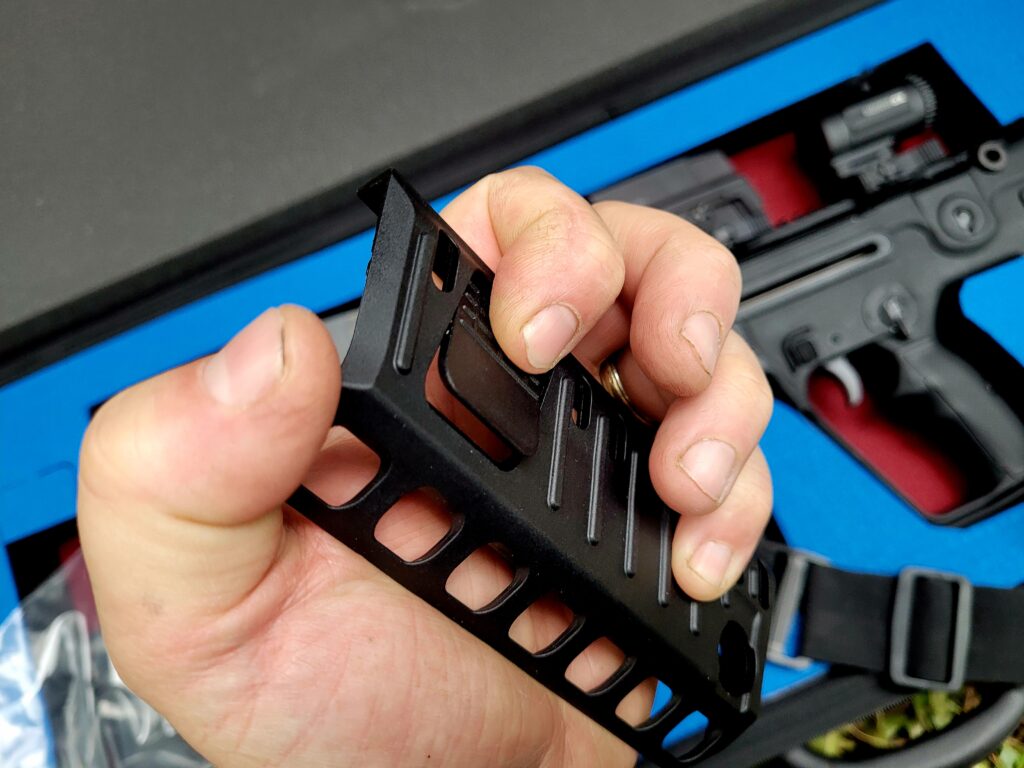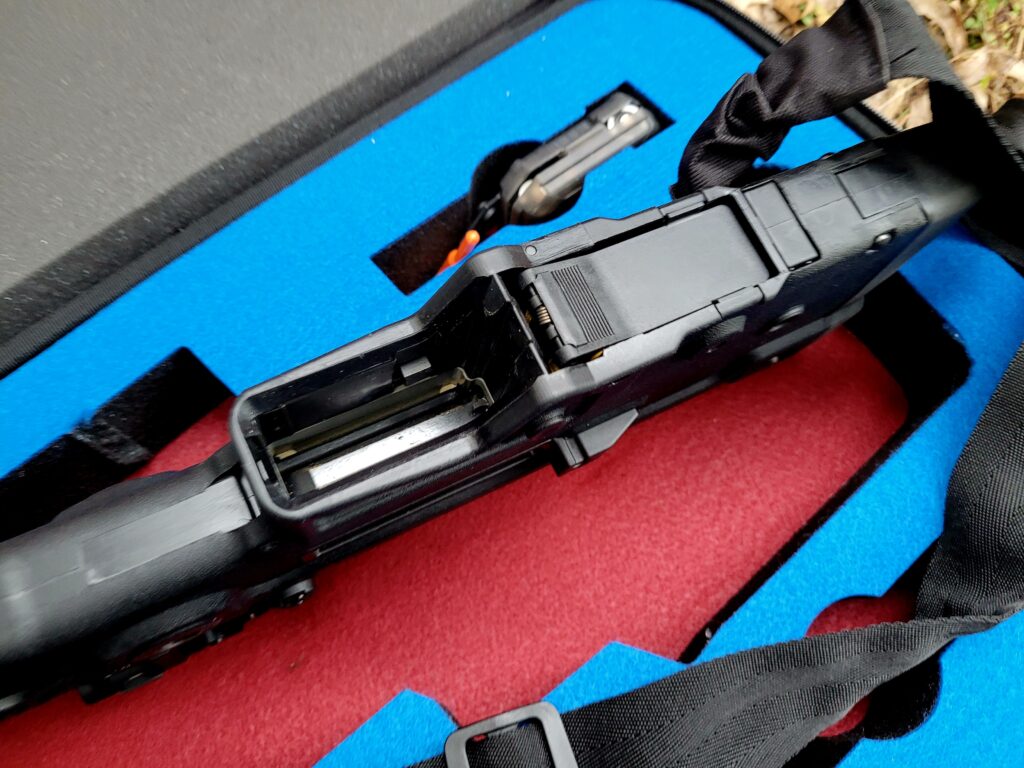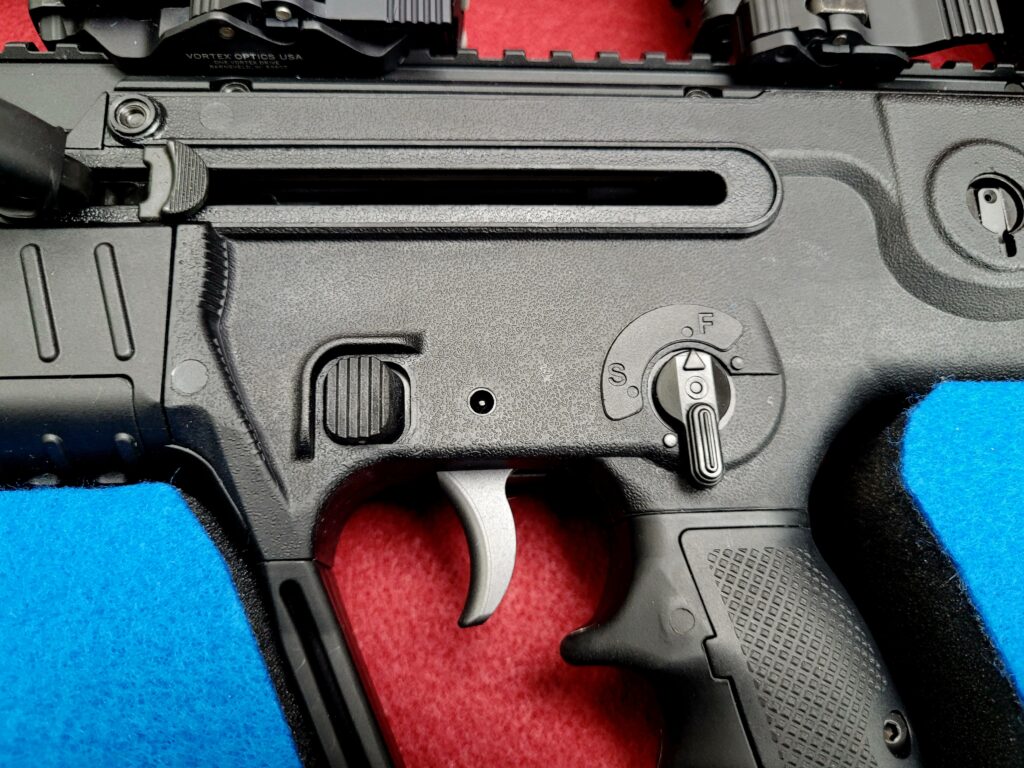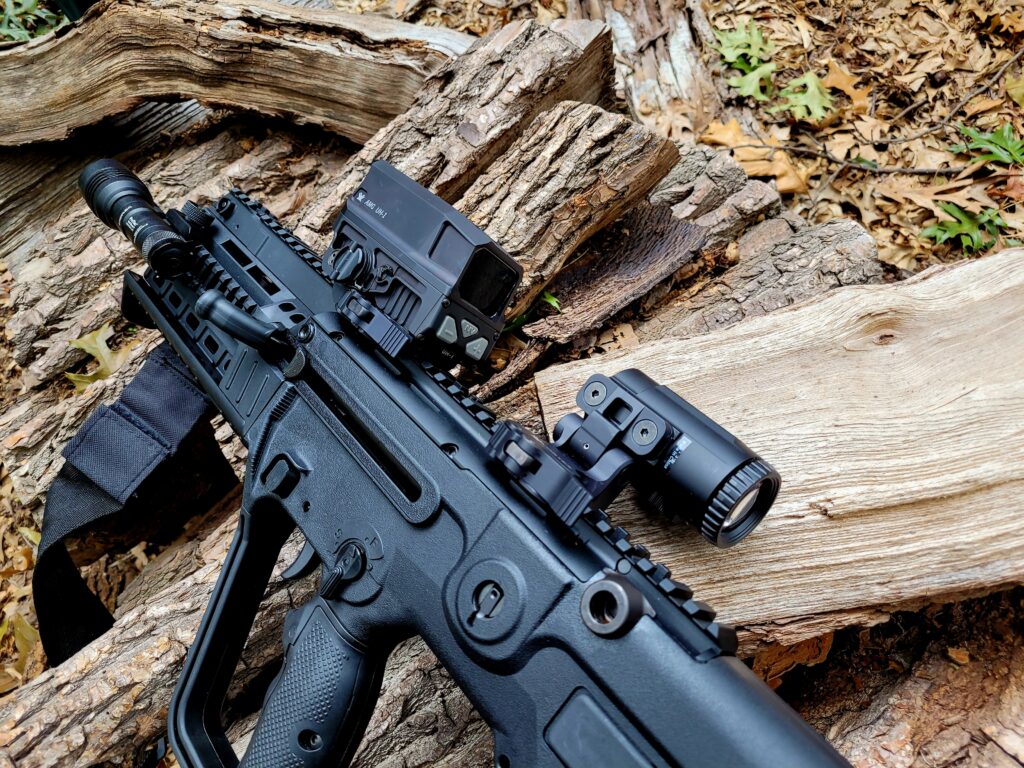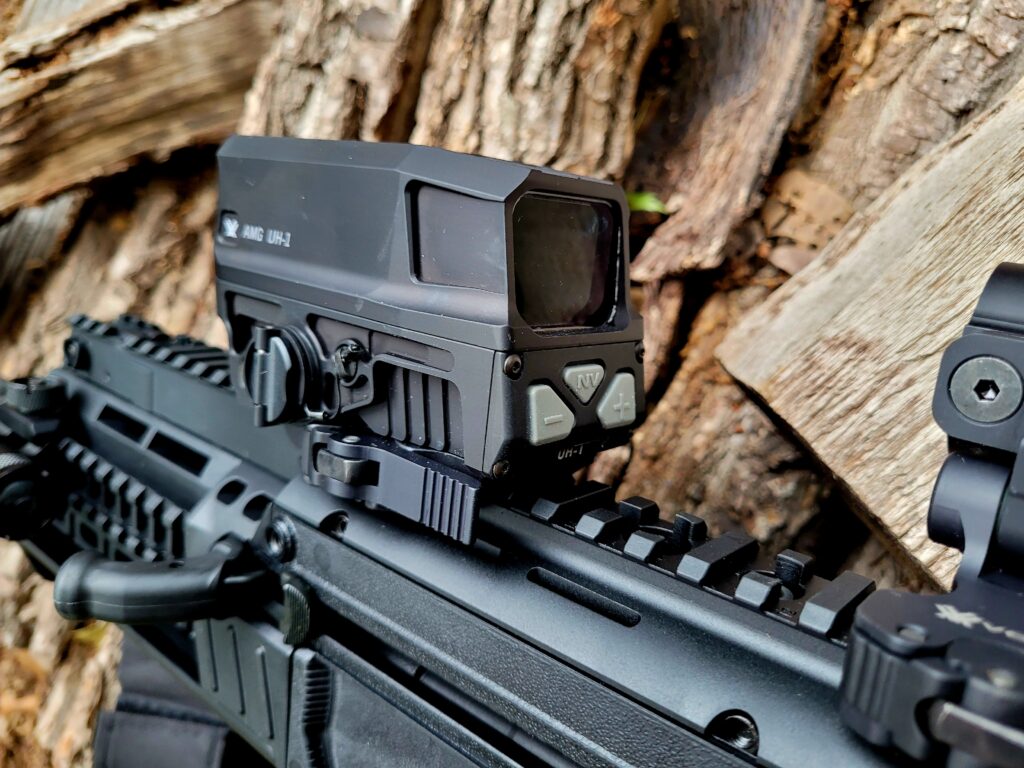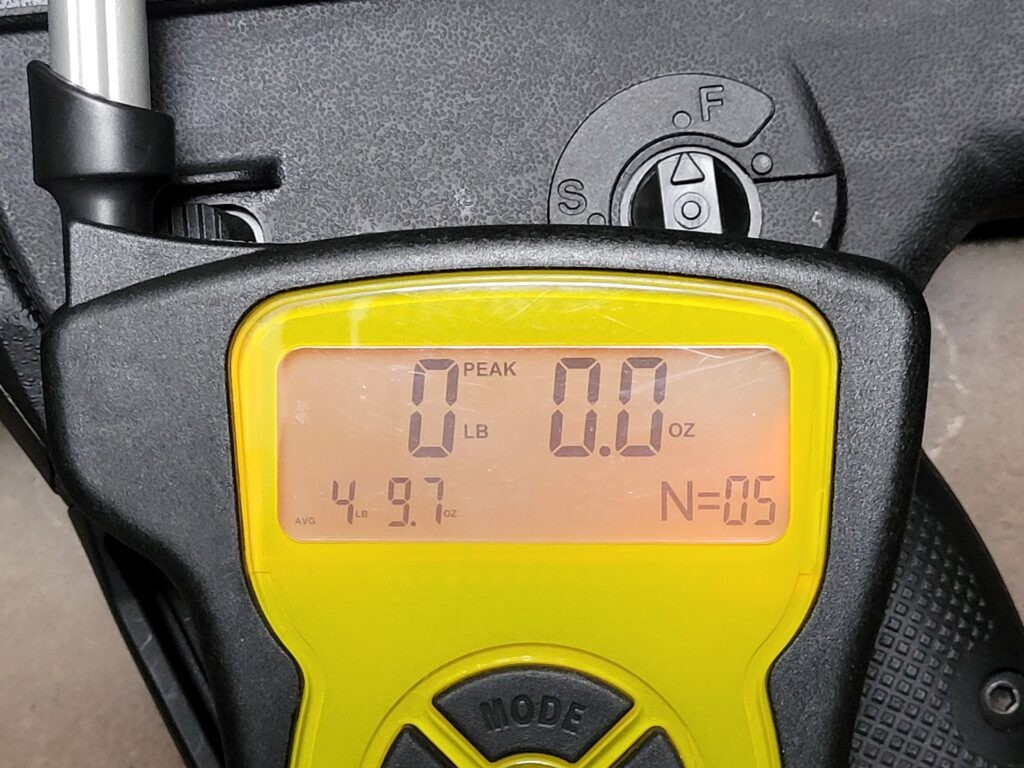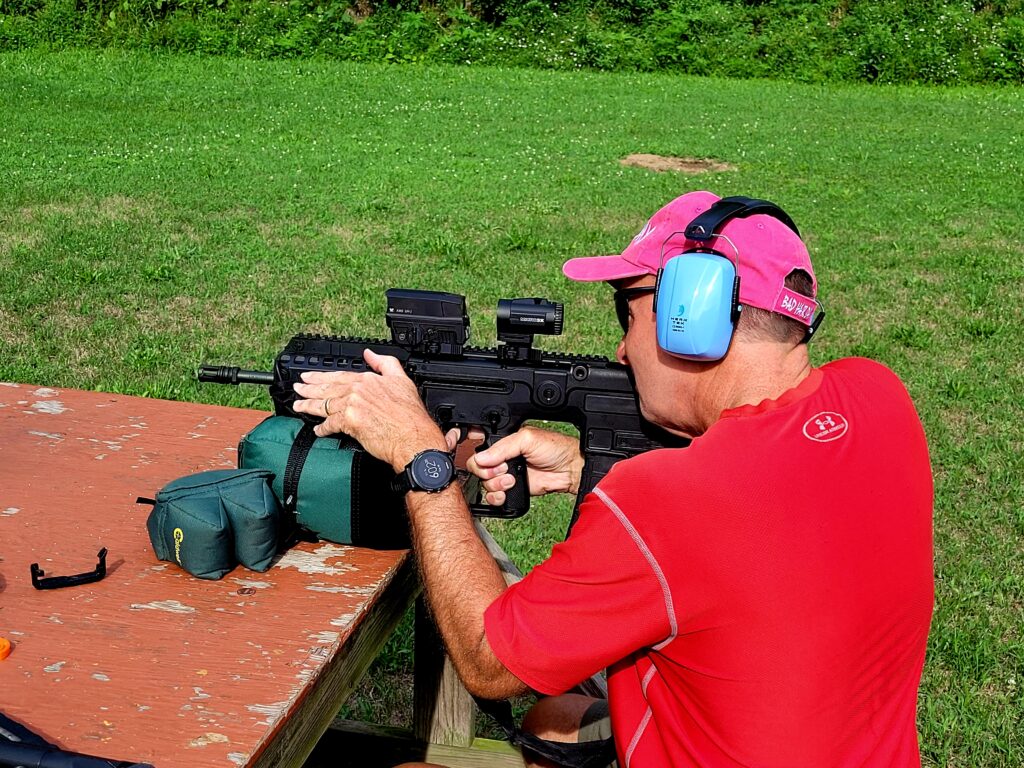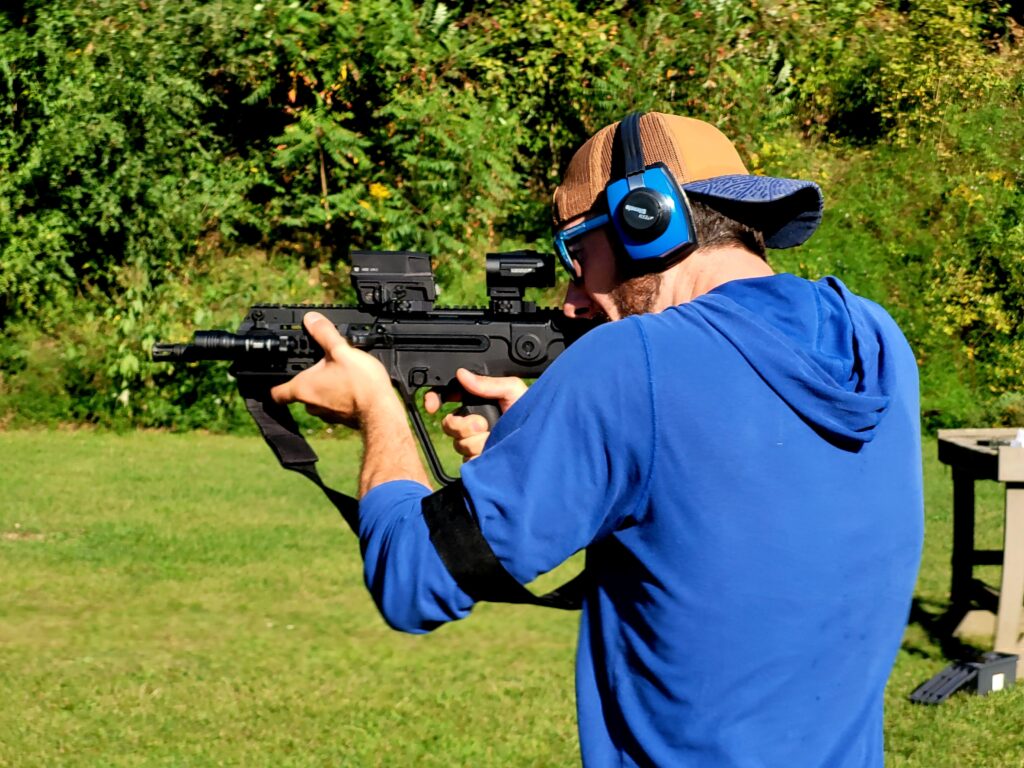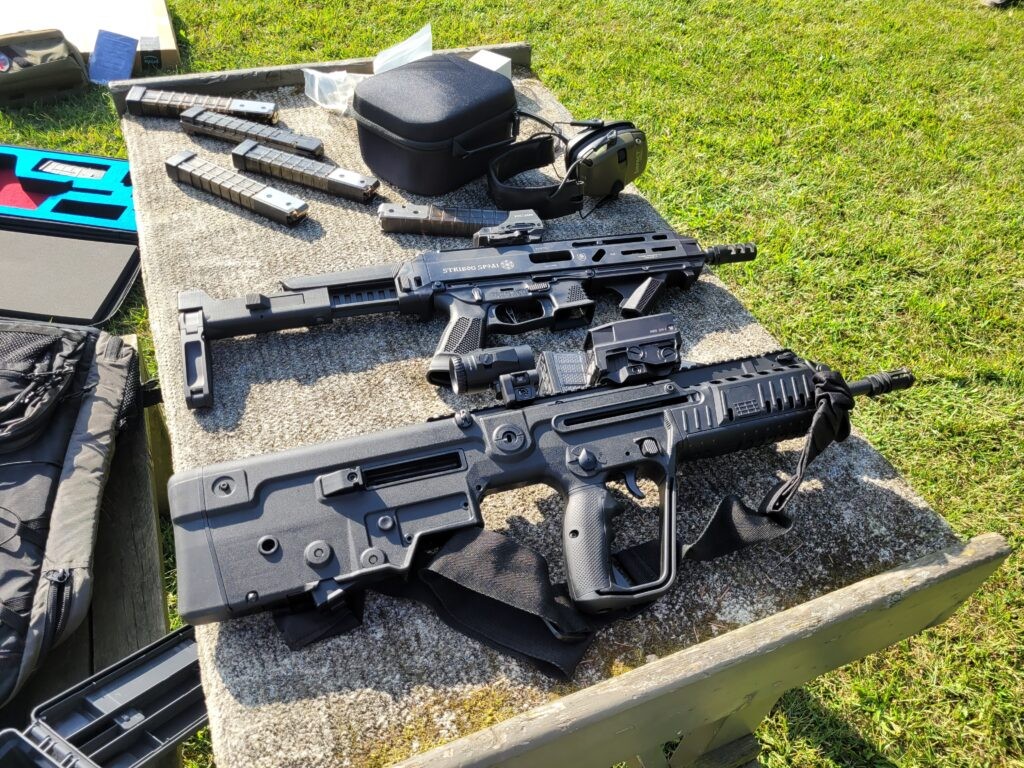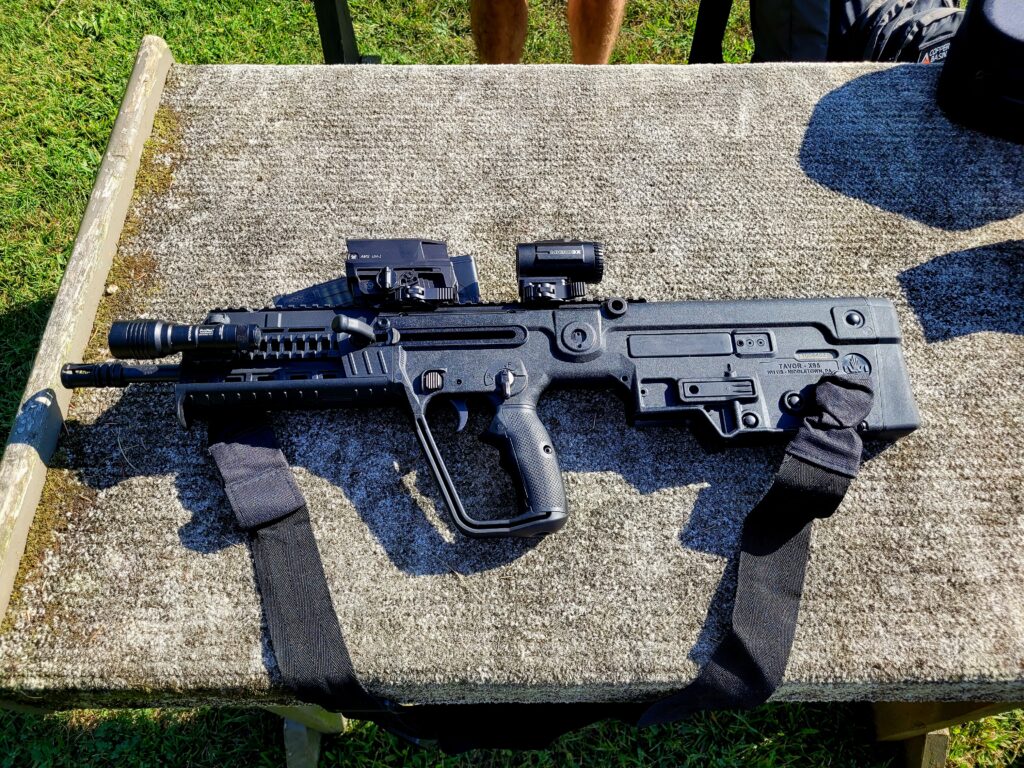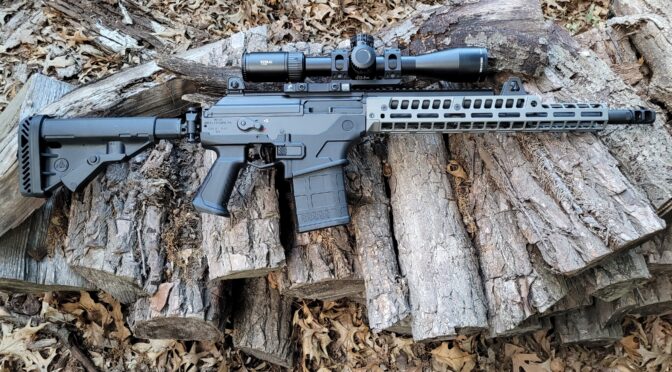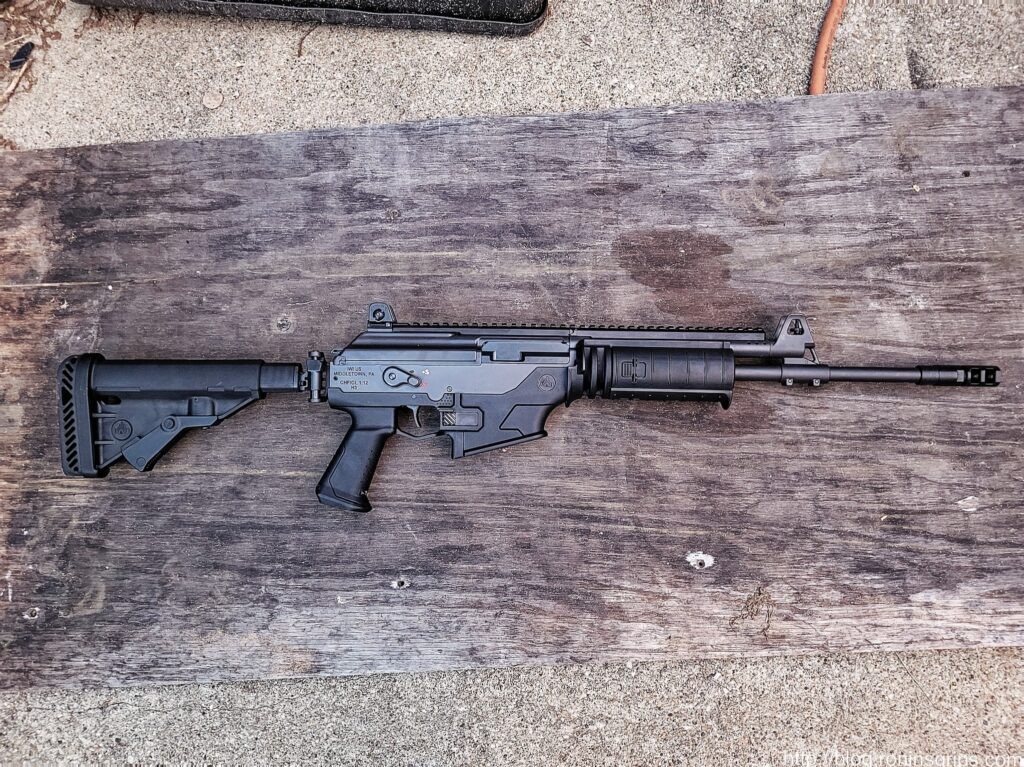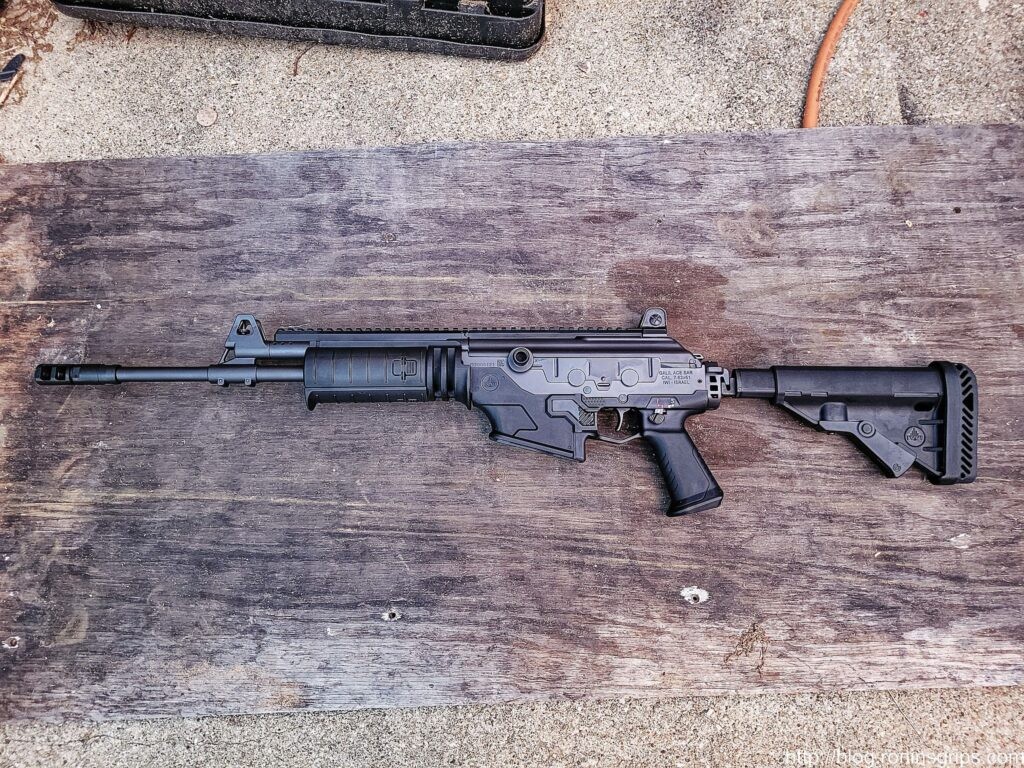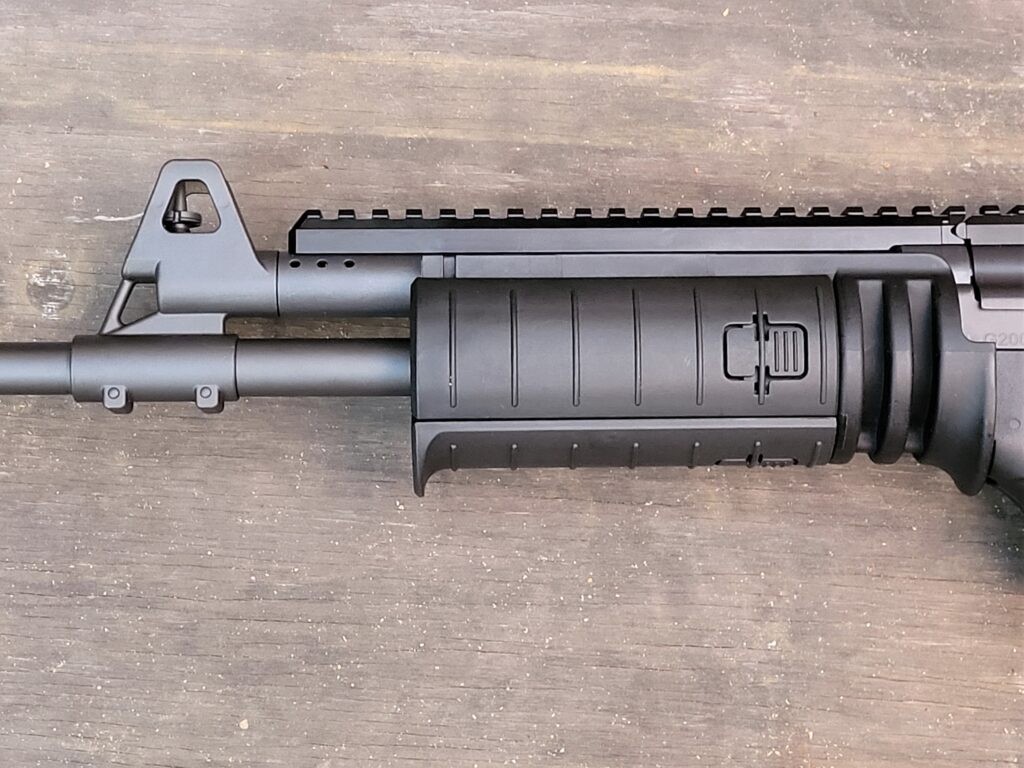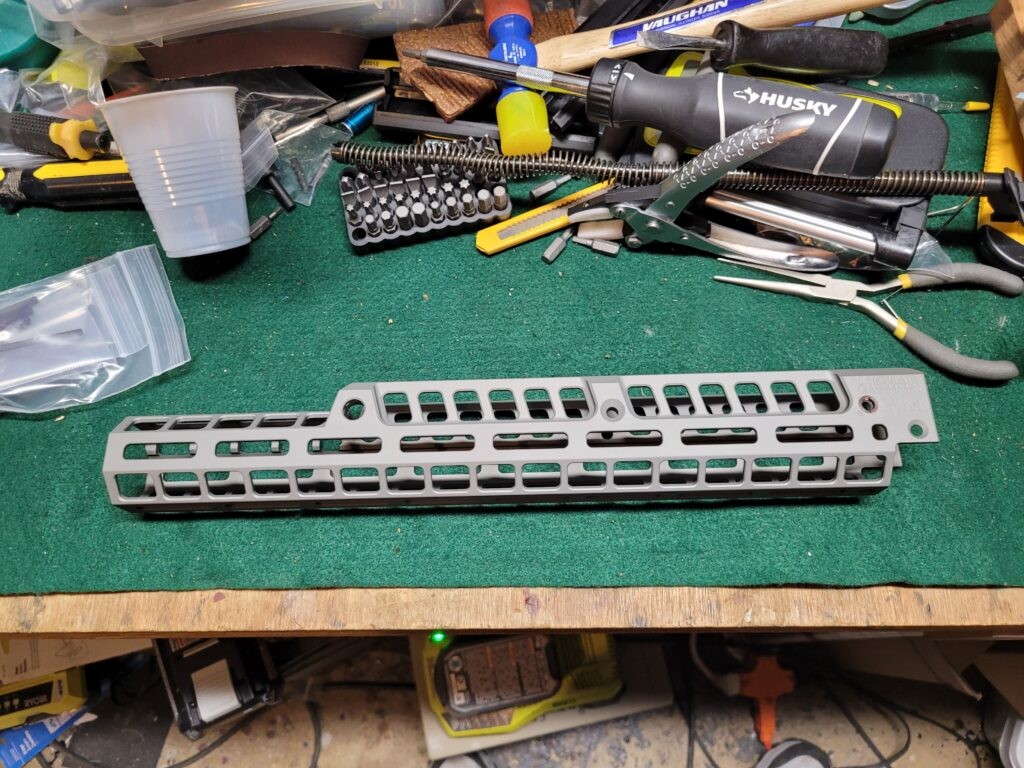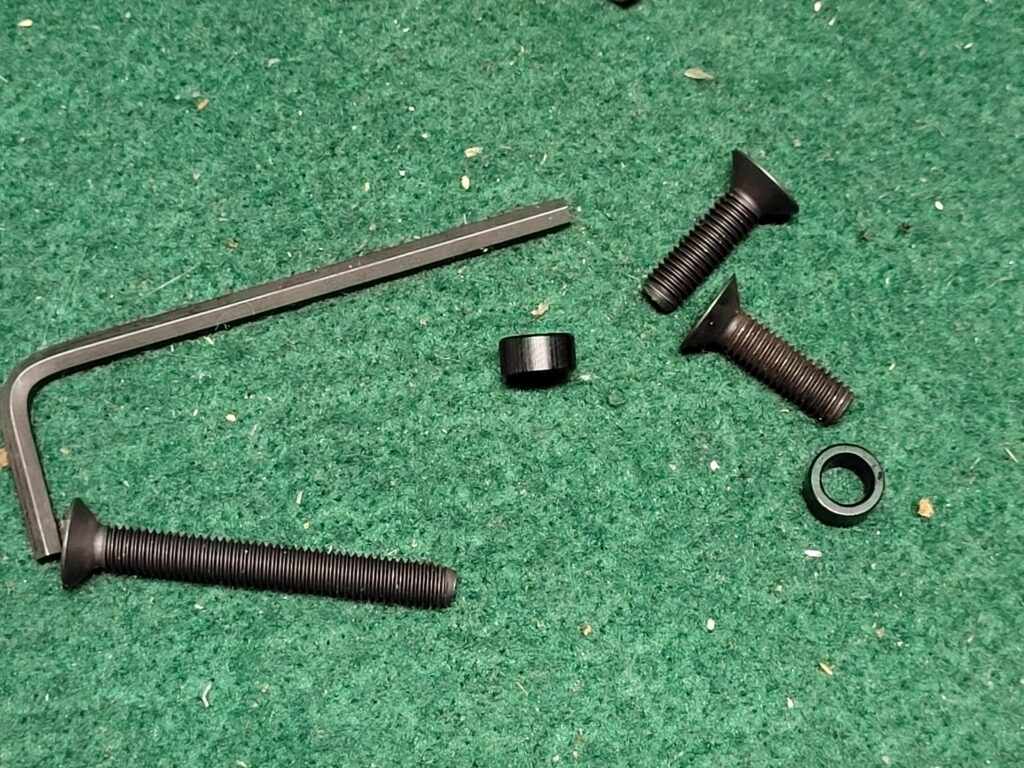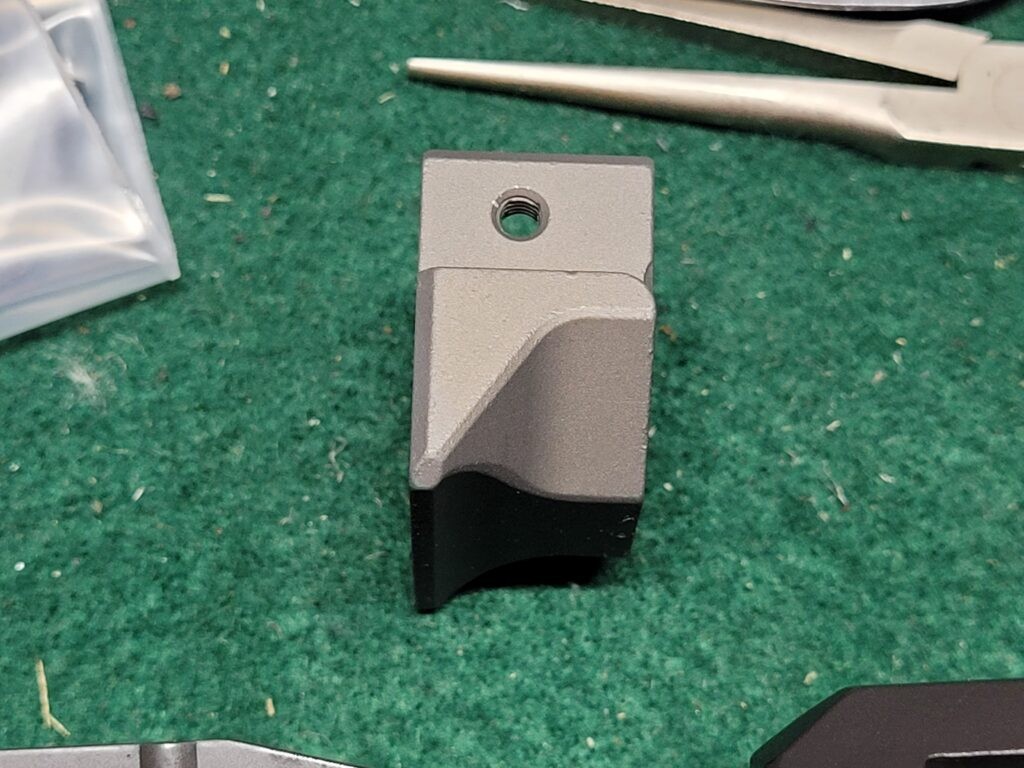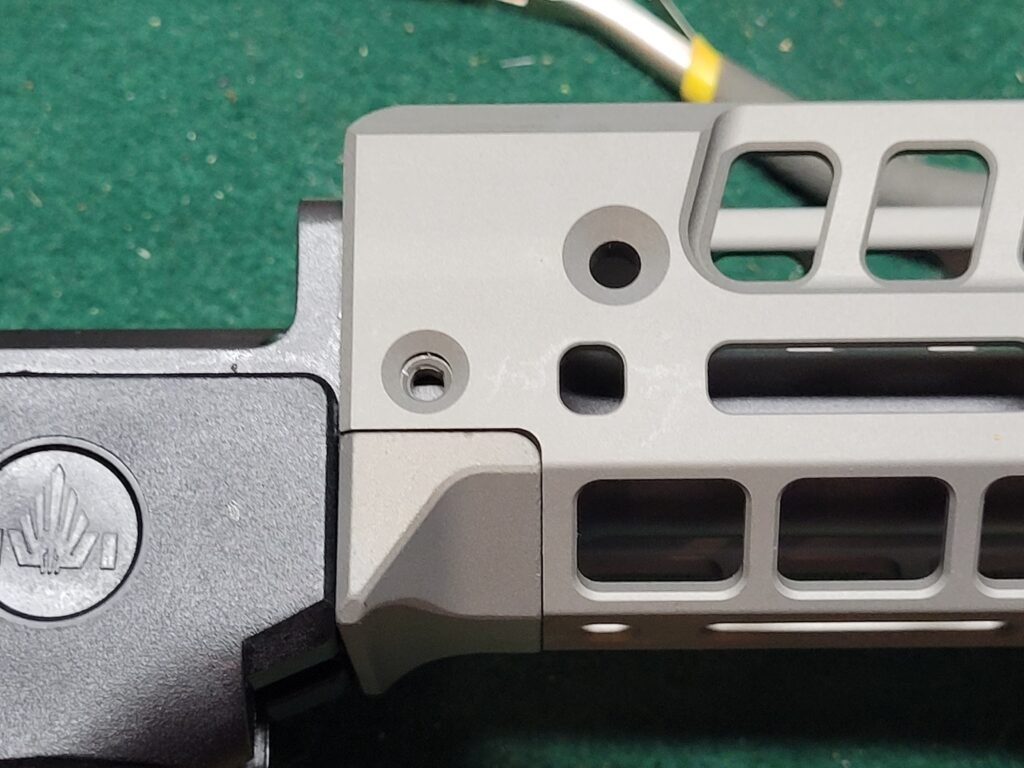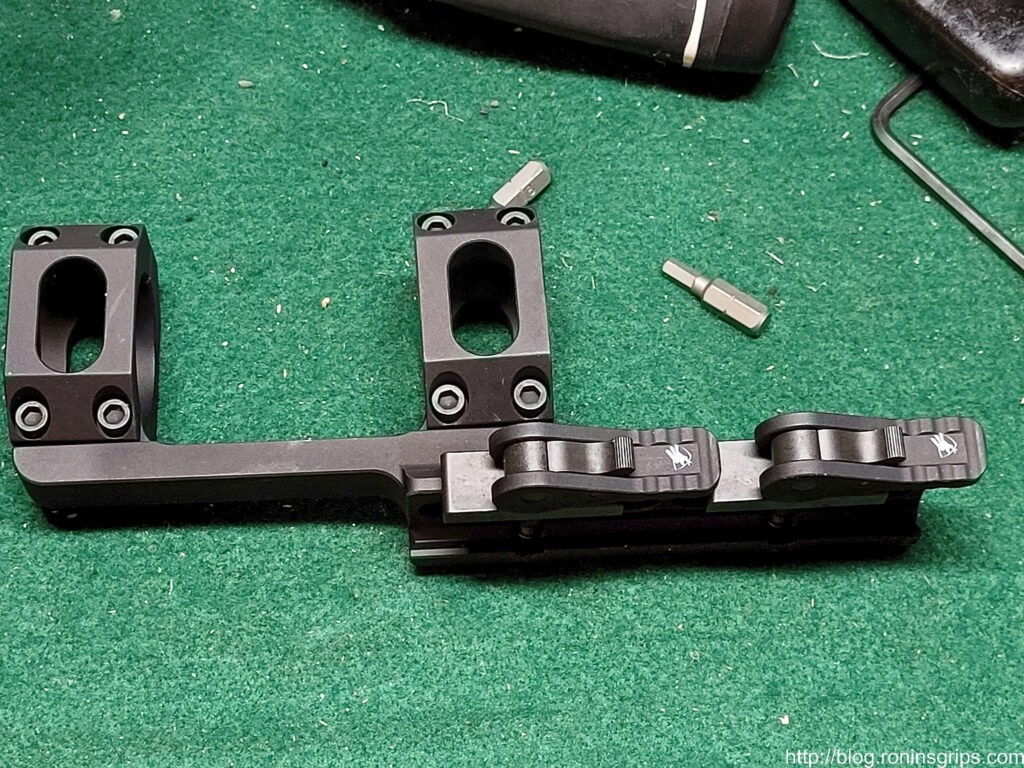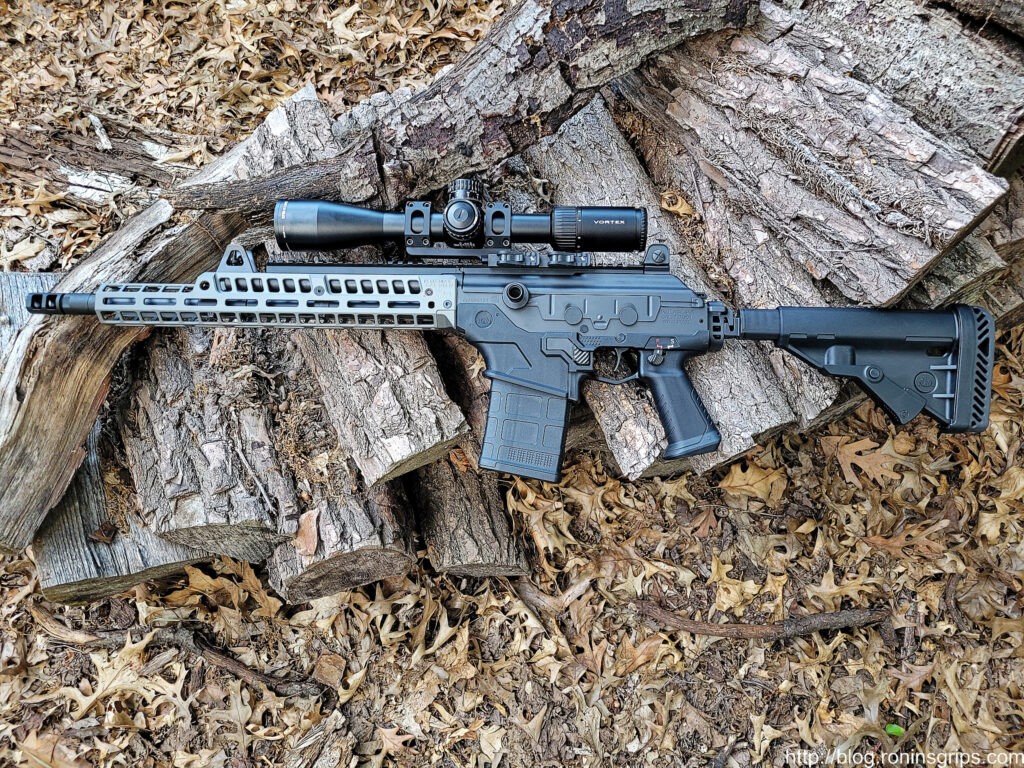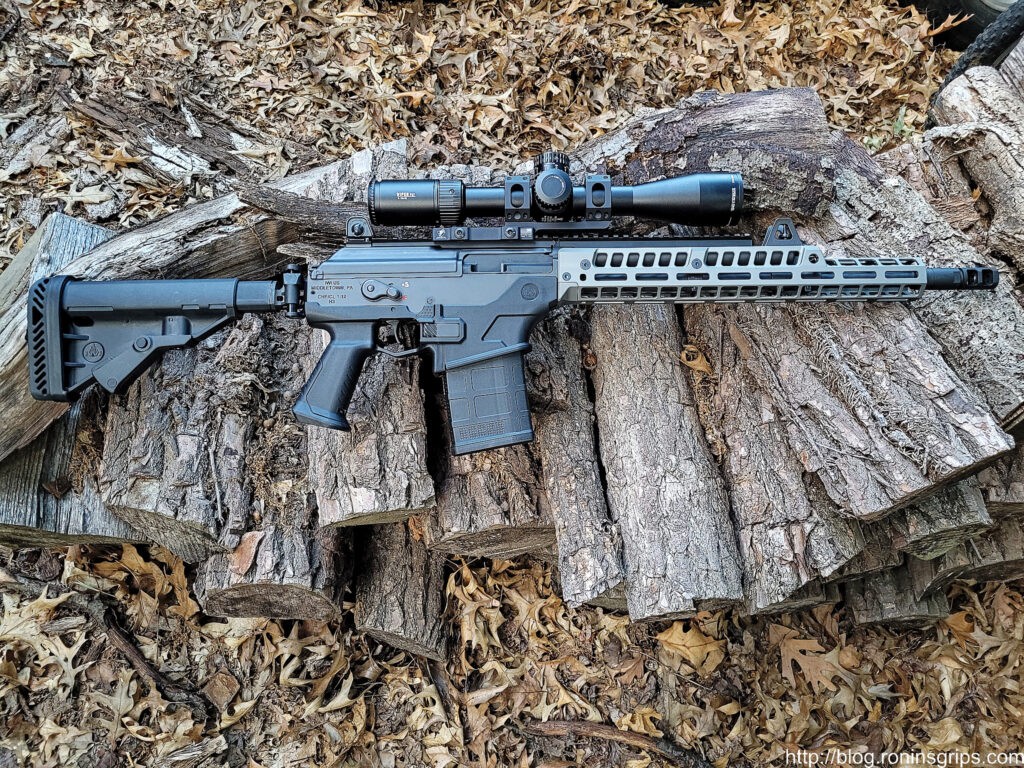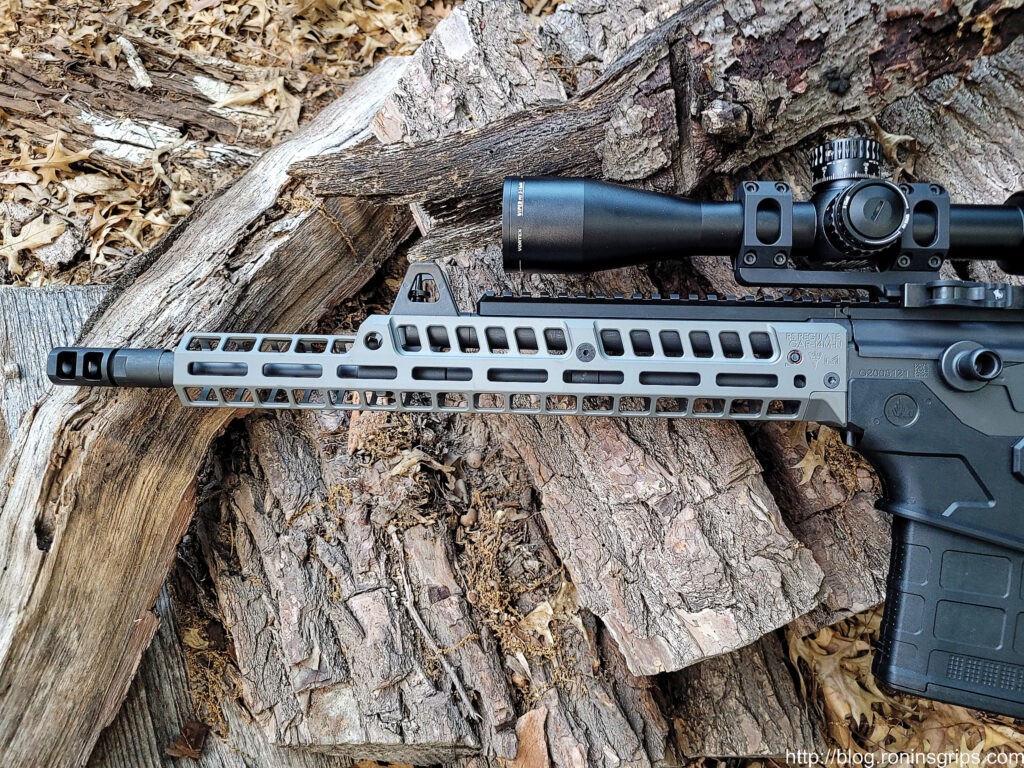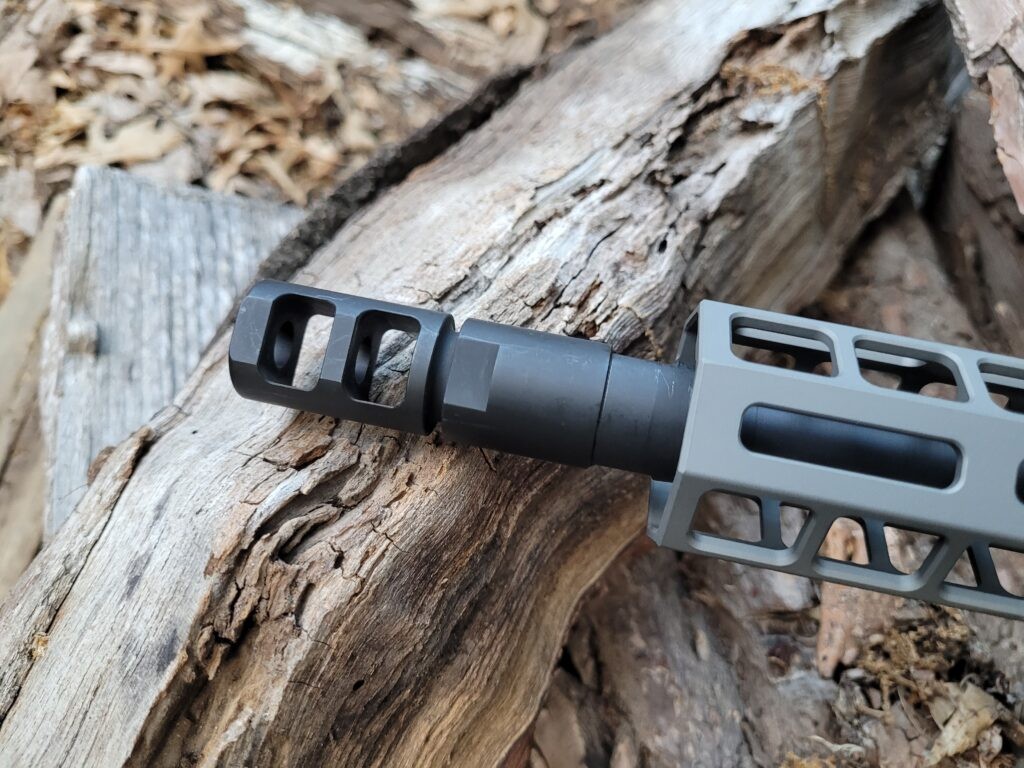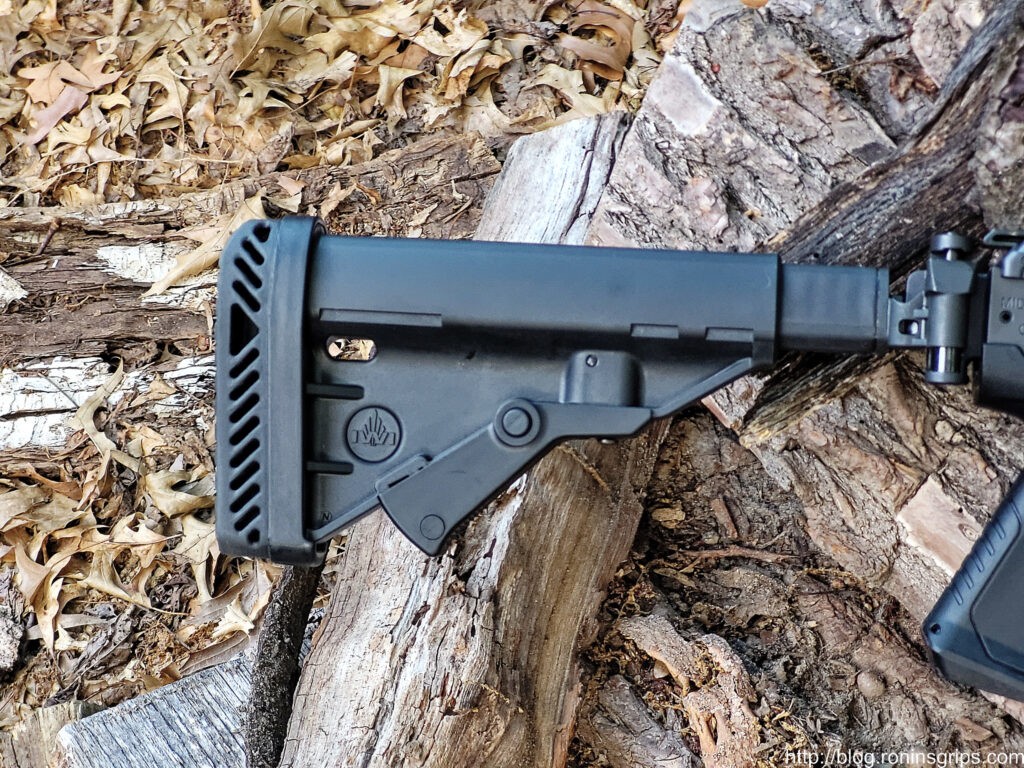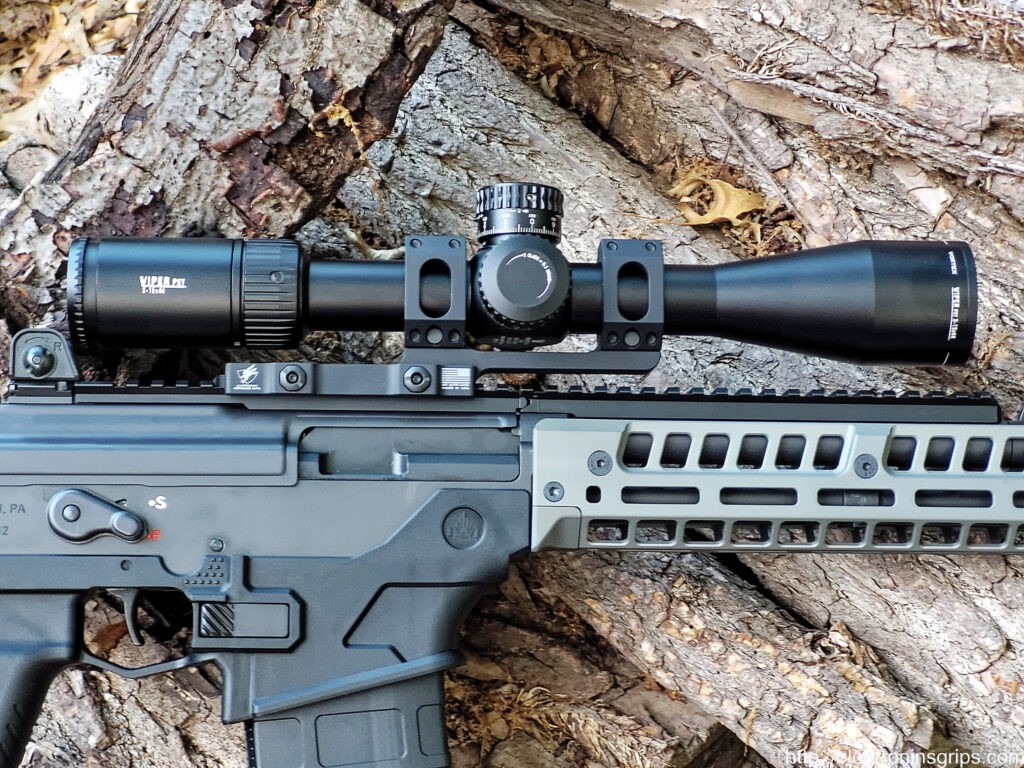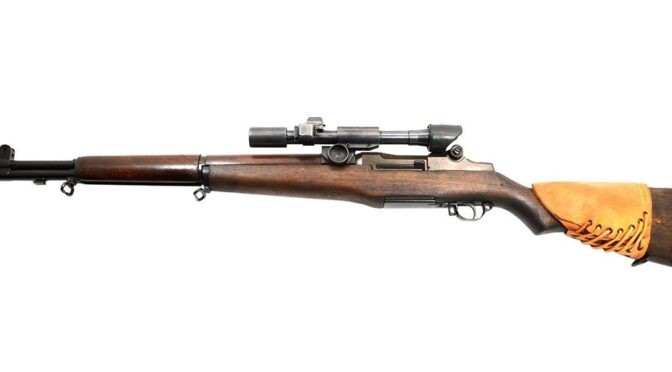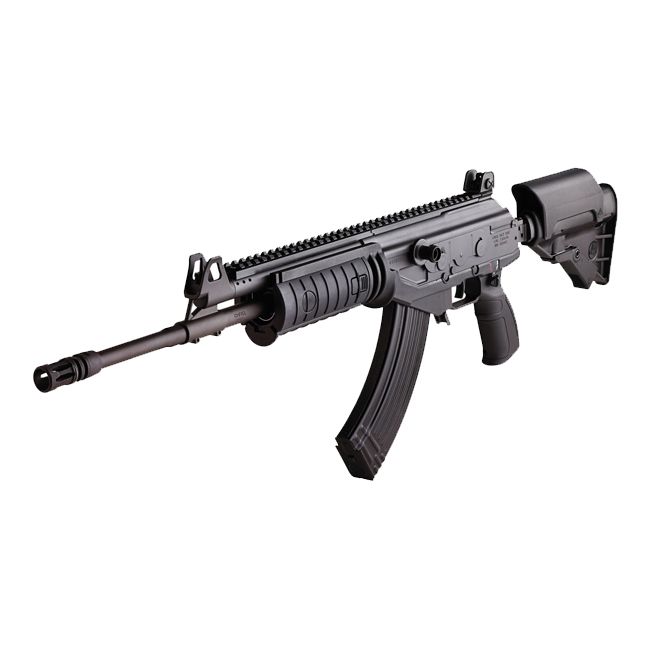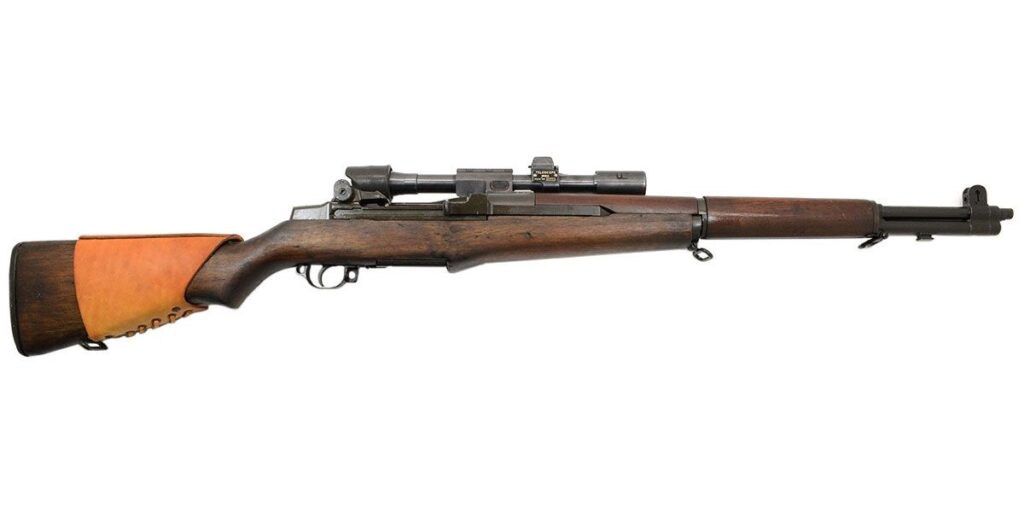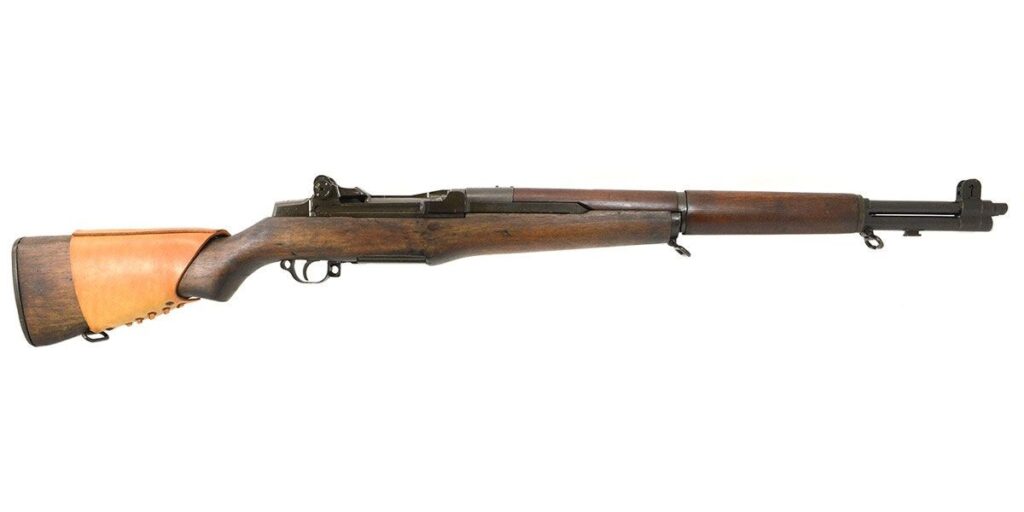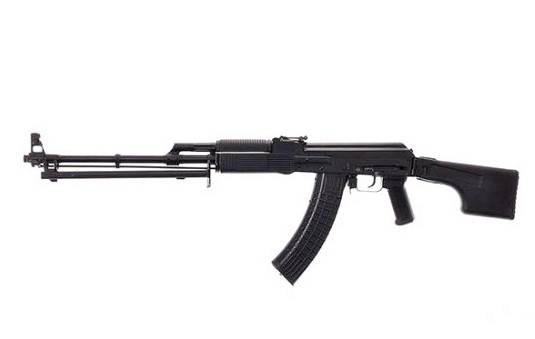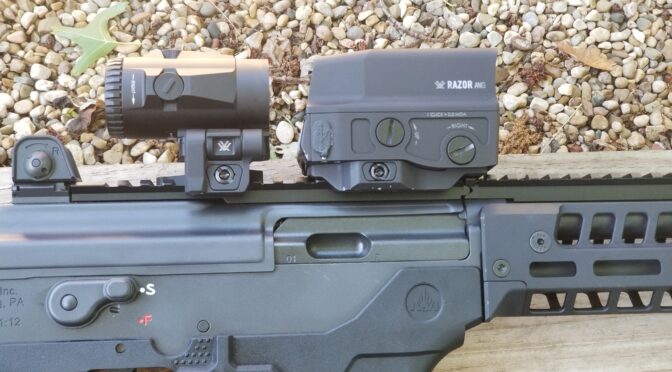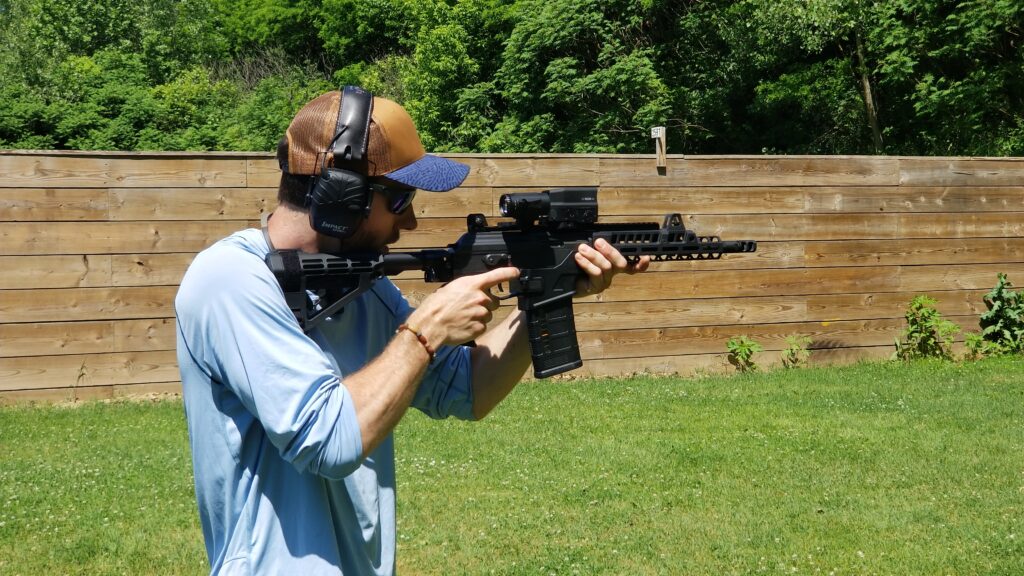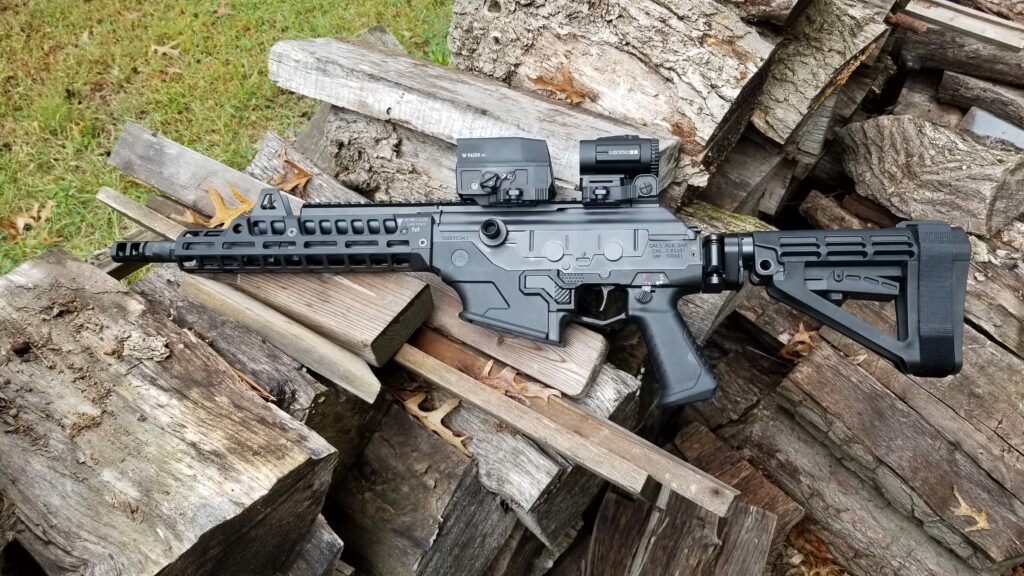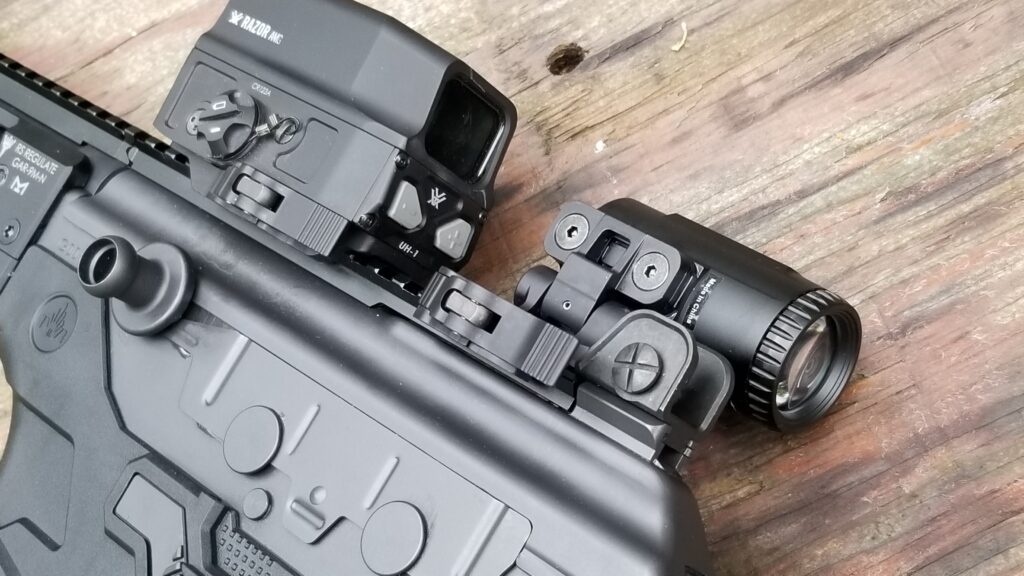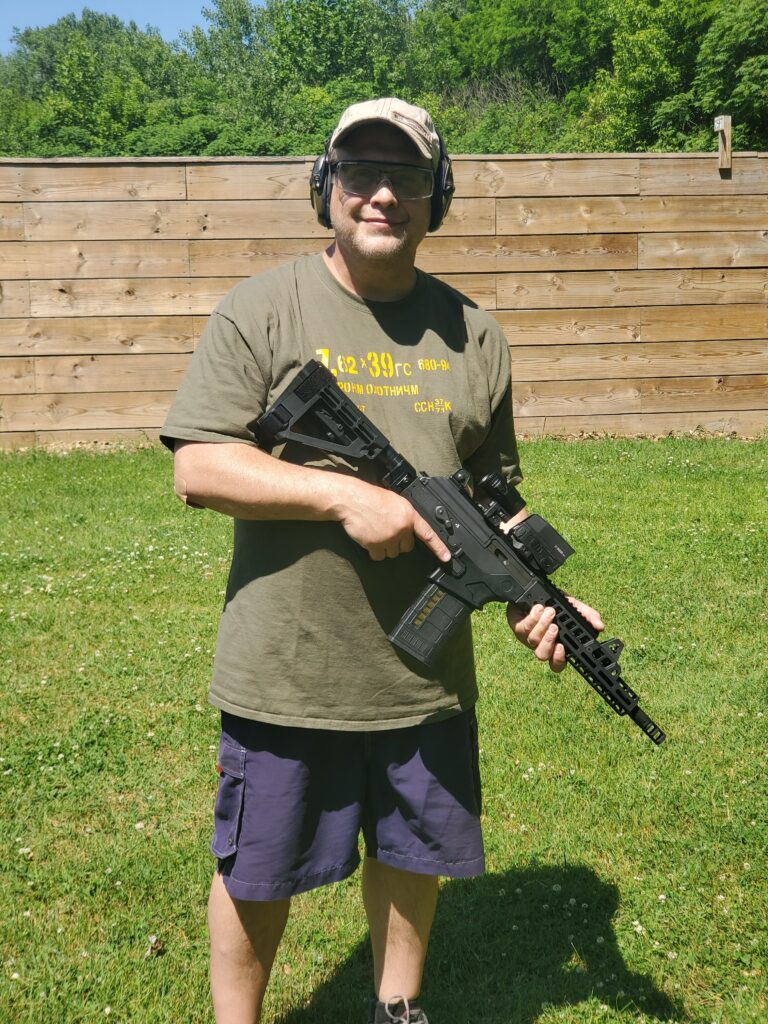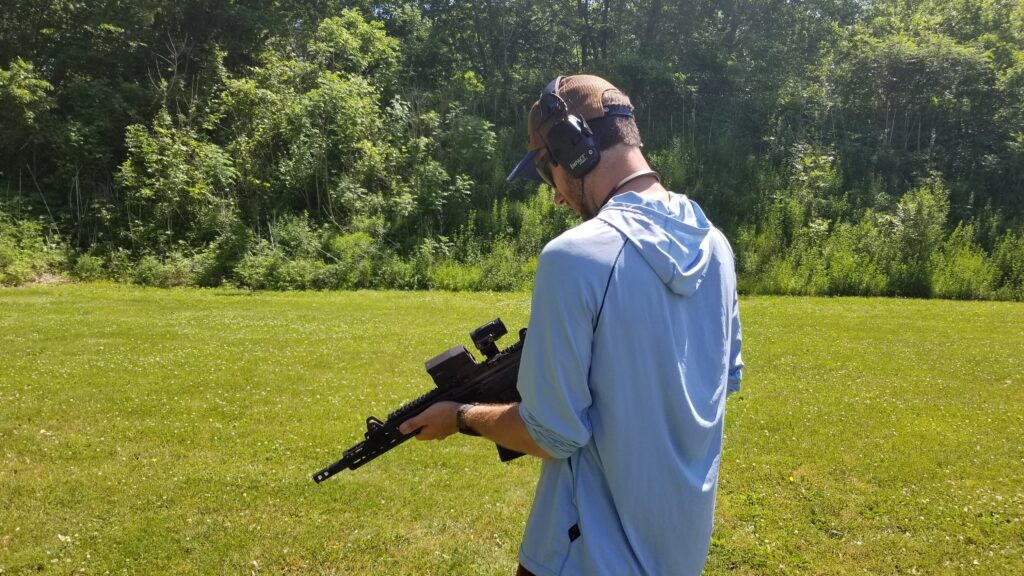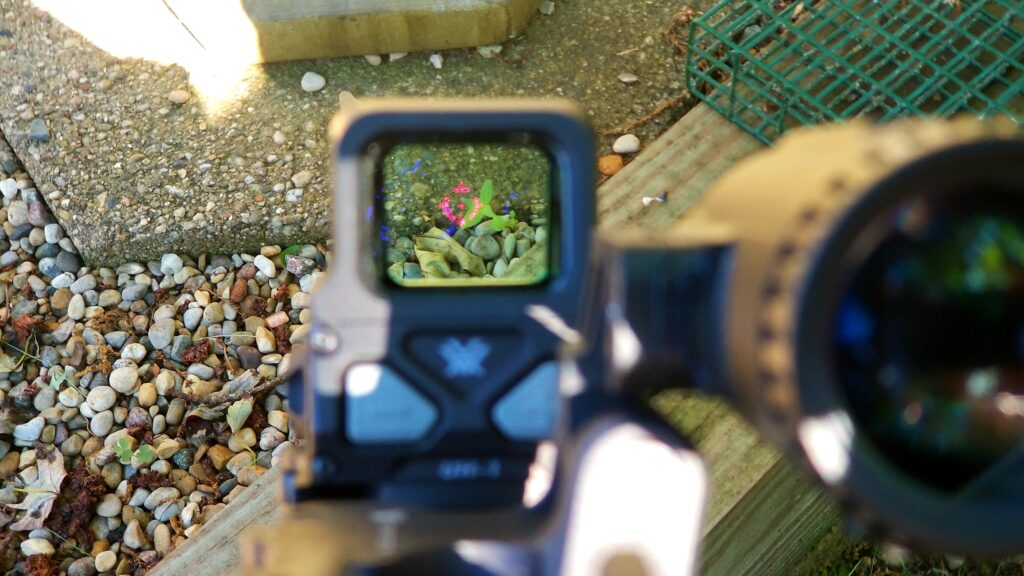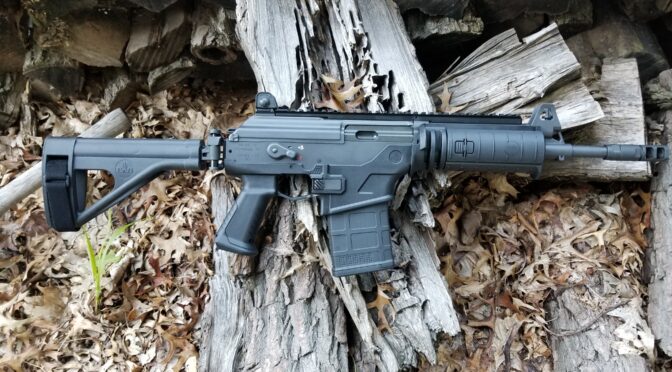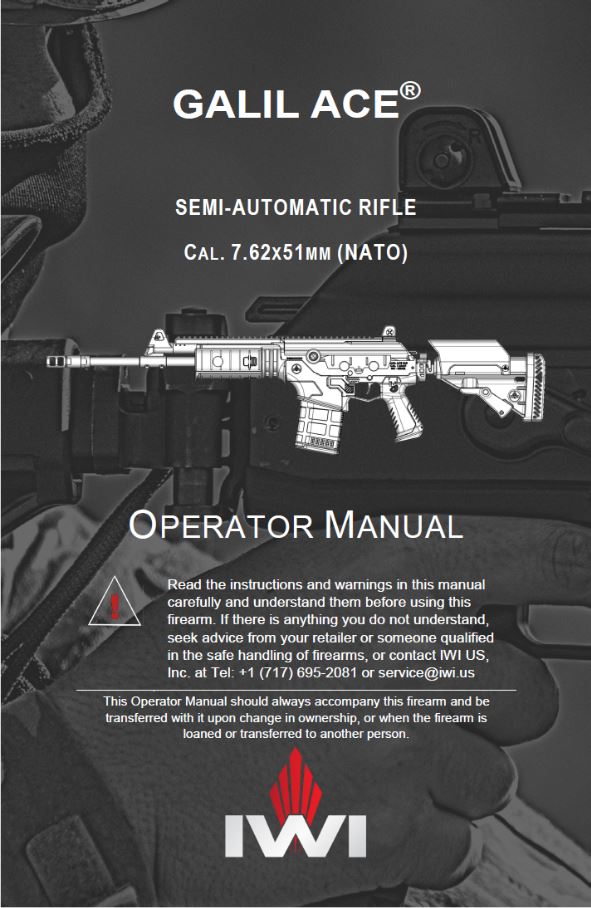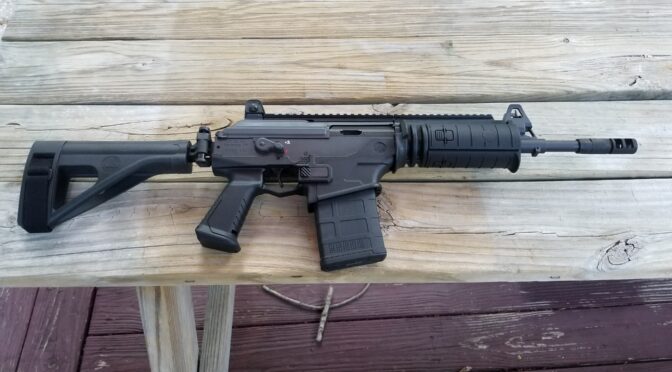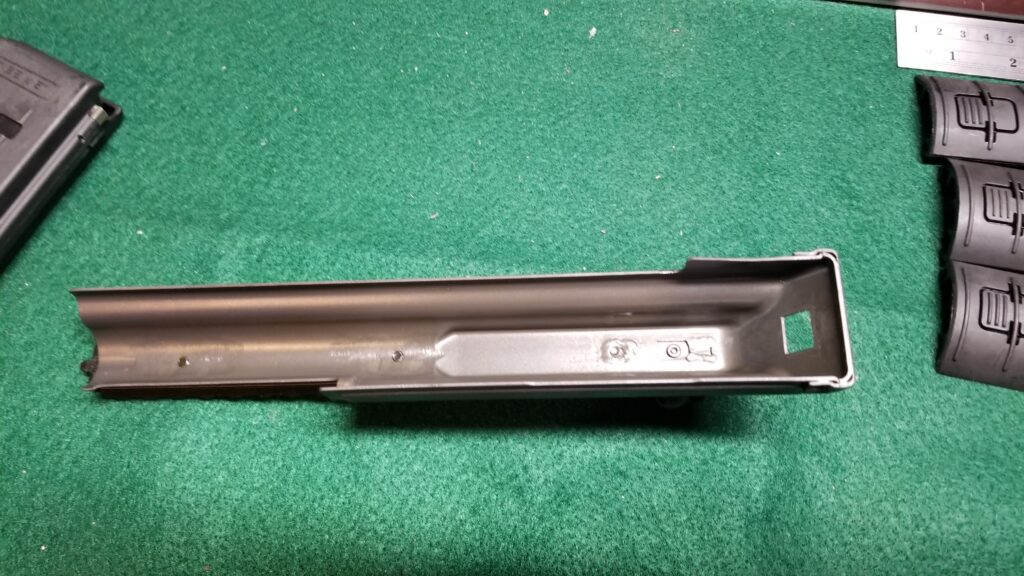It’s really rare that I hold on to a firearm for more than a year. I bought my Tavor X95 in August of 2021. It’s now August of 2024 and it’s still here and probably not going anywhere soon. Why? Because I like it – how’s that for a reason?
There Is A Learning Curve
I’ll start with the one negative – you definitely need to learn how to operate the Tavor. I guess I have spent too much time on AK and AR platforms of various types because I always fumble around with the controls when I get to take it to the range – which only a few times per year.
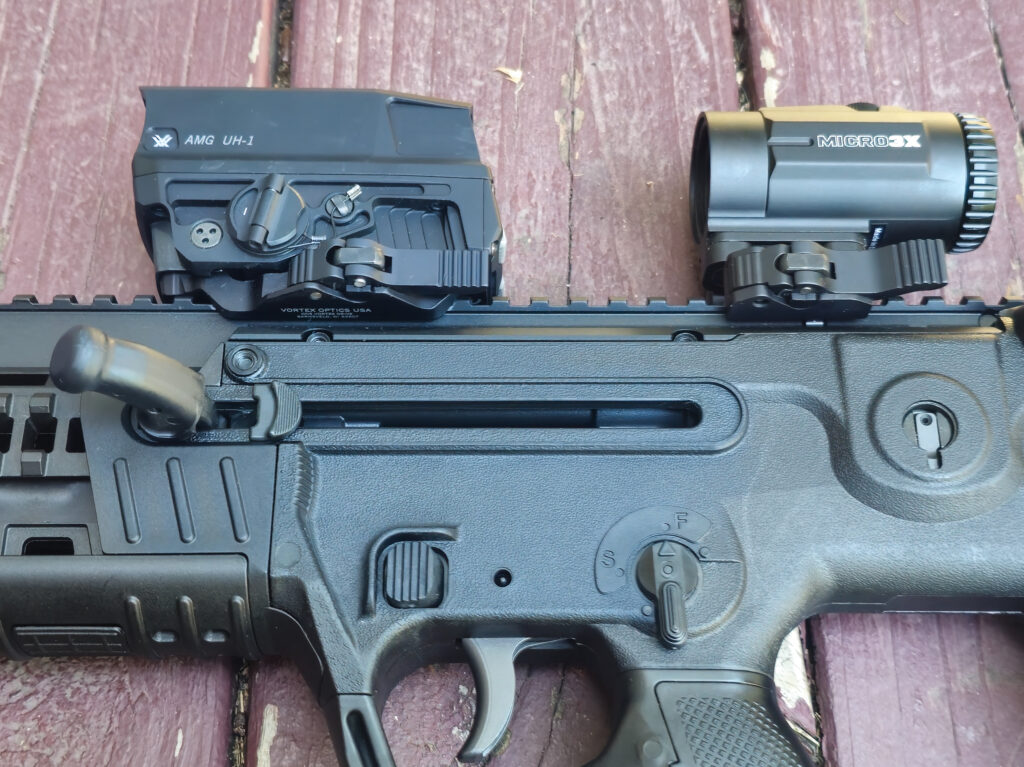
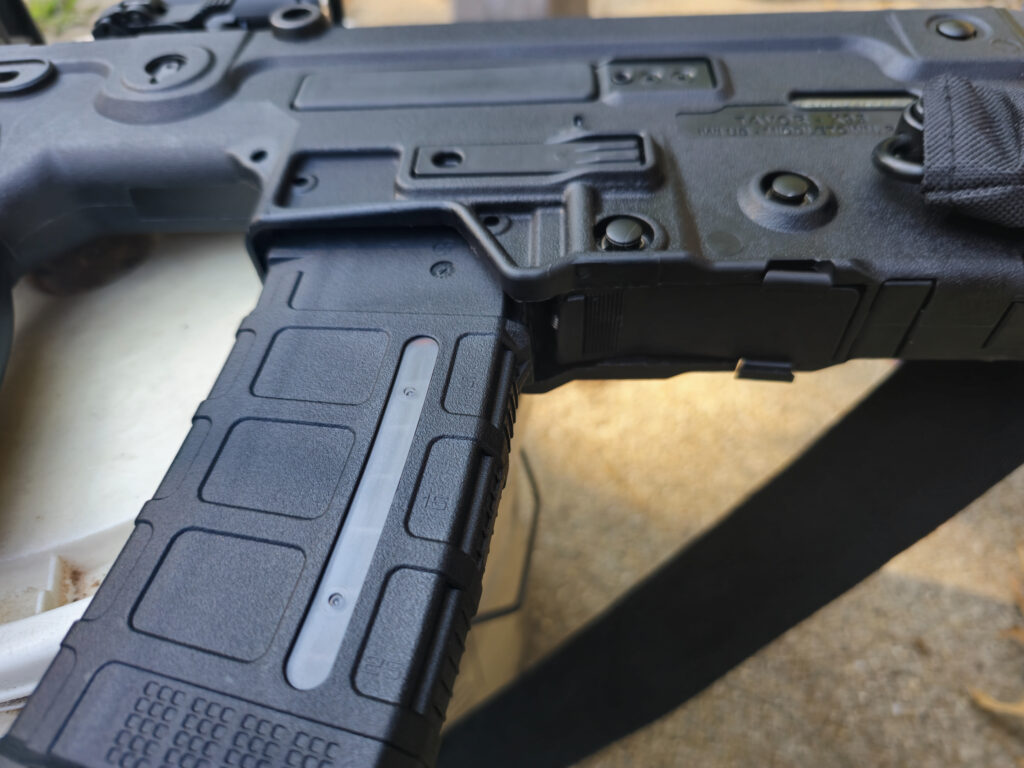
What’s interesting to me is that the Israelis are phasing the Tavor out. The Israeli military has always been pragmatic and has decided there are too many negatives with continued use of the Tavor. They are actually moving back to the M4 platform with local companies producing the rifles plus a new firing mechanism.
Compact With Full Power
With that said, the Tavor’s bullpup design does allow for a compact weapon that has a surprisingly long barrel. The X95’s barrel is 16.5″ long allowing for higher velocities to be achieved and thus a longer range.
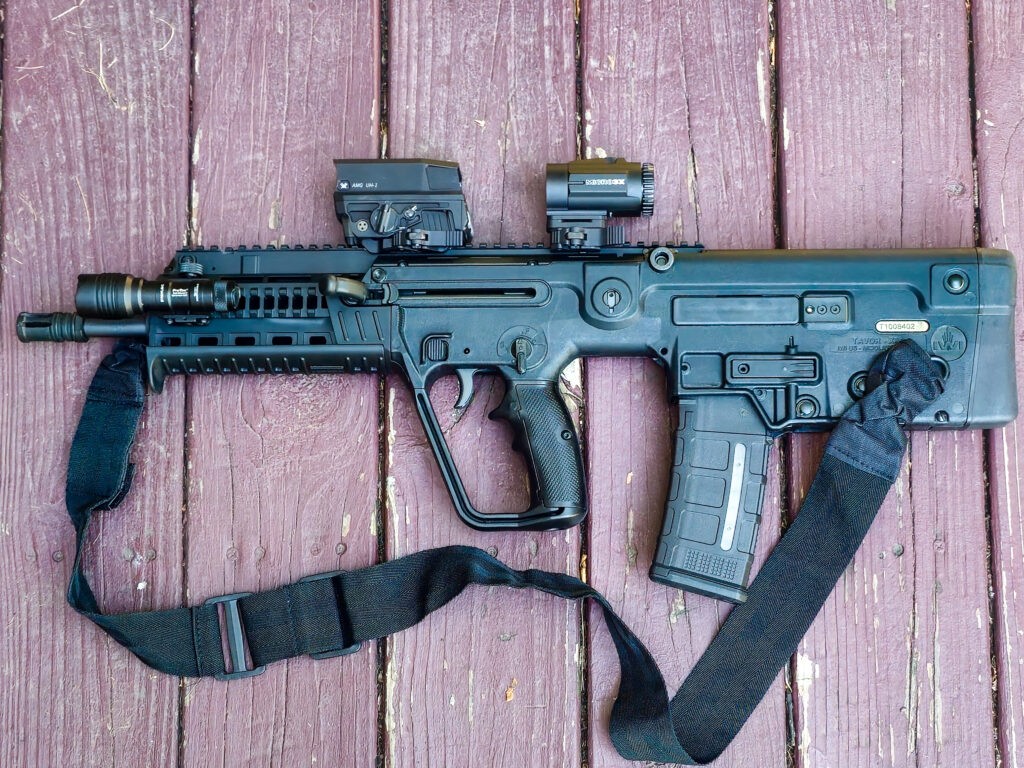
Reliable
IWI designed the Tavor to be reliable in their harsh conditions. I must say I have never had a failure to feed or failure to eject with the Tavor. Now my round count is probably around 1,000 or just over. So, not thousands and in Michigan vs. the sandbox but I’ve enjoyed shooting it.
By the way, I use bulk M855 ammo. We had the Tavor out just a few weeks ago and experienced one round in the Tavor that was a dud. I recall we were shooting, my niece pulled the trigger and nothing happened. We waited a minute, kept the rifle safely pointing down and ejected the round. There was a good primer strike but probably a bad primer. Our range has a misfires tube that goes down to a bucket buried a few feet down and I dropped it in there.
I’ve found both Magpul and Lancer mags to work just fine with the Tavor. I prefer windowed mags or the translucent Lancers so I can see how many rounds remain.
Trigger
Bullpup triggers are a cludgy affair at best. You have the trigger in the middle of the rifle that is then connected to a linkage that then transmits the pull back to the hidden trigger mechanism in the action at the rear of the rifle. As a result, you tend to get rather wierd triggers – long relativey heavy pulls with spongy breaks in mass produced rifles.
The Tavor’s original trigger was so-so. I looked back in my notes and did not write down the details in terms of pull weight. I installed a Timney trigger with a 4# 9.7oz average pull but it broke – note, Timney has sinced revised their design to address the problem I had with a pin moving out of position and jamming the trigger pack.
The Tavor now has a Geissele Super Sabra that has run just fine. I reported the pull as 4# 12oz from five test pulls when I first did the swap back in February 2023. I did it again now out of curiosity. I did 10 careful pulls and came up with 4# 9oz. It also breaks quite cleanly.
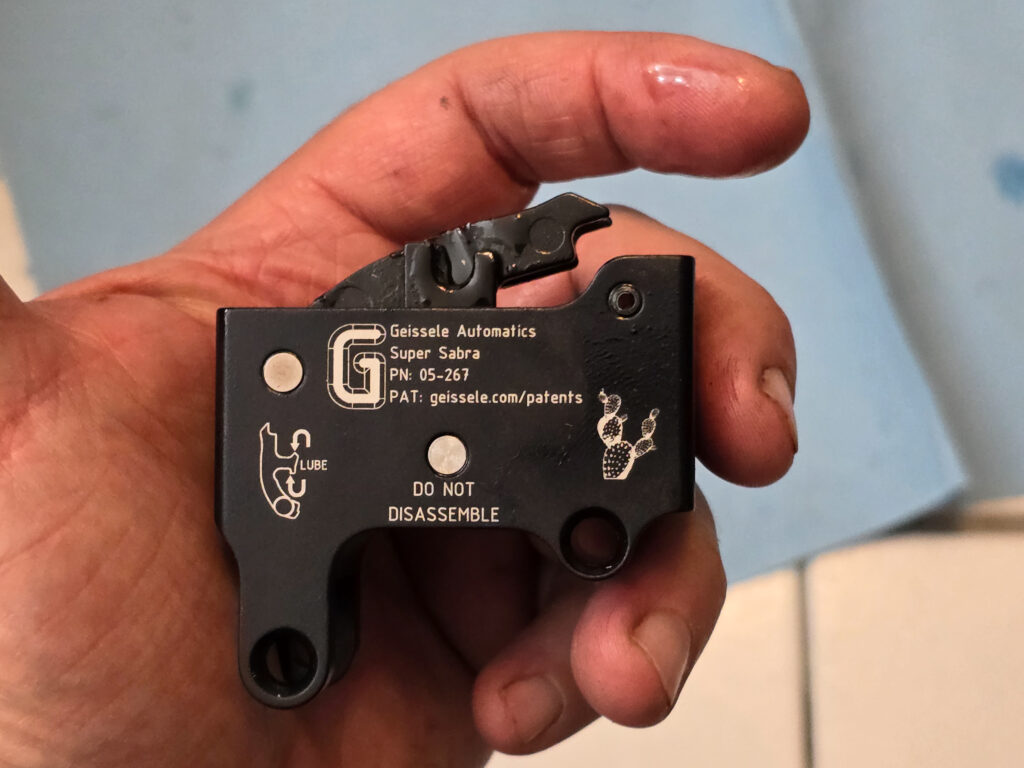
Accurate
I feel the Tavor X95 is just fine. I had no problem keeping bulk M855 ammo in a 2-3″ group at 100 yards with the combination of the Vortex AMG UH-1 holographic sight and Vortex Micro 3x magnifier. My intent with the Tavor was always for relatively close range shooting – within 100 yards most of the time and maybe out to 200 max.
Like the Optics Combination
I really like the flexibility of the Vortex AMG UH-1 optic and magnifier. There are a few pros and cons though. Swing the magnifier out of the way and you have a wide field of view and the benefits of a holographic sight. Swing the Vortex Micro 3x magnifier in place and you have a little bit better view of further targets. The cons are the weight of the two separate components and a reticle that is meant for speed vs. precision – the sheer size of the dot covers up quite a bit of the target at 100 yards so you are in the ballpark with repeat shots.
Now, I bought the rifle for relatively short ranges as mentioned above. I wanted speed, flexibility and good enough precision. I truly feel I got exactly what I wanted. I now have two of the Vortex AMG UH-1 sights. The second is sitting on my 10mm Stribog.
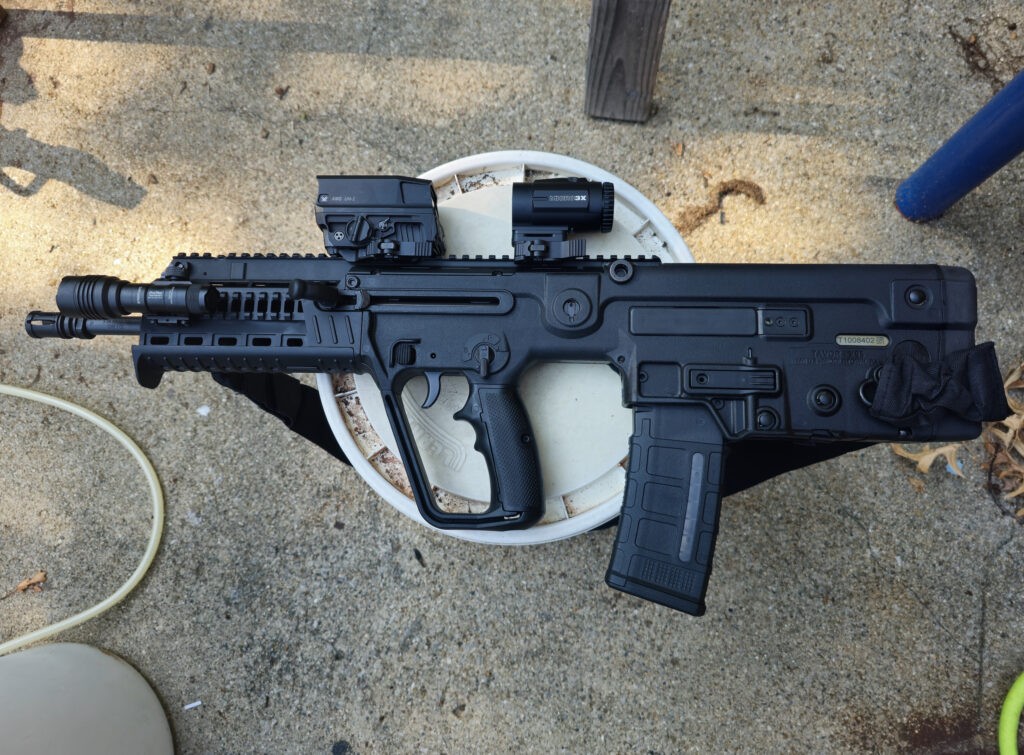
The Wow Factor
From the moment I open the fitted Peak case, there is a decided “wow” factor from whomever I am shooting with. It turns heads with its looks. The Tavor X95 looks like it stepped out of a Sci-Fi movie with its unique lines and modern look.
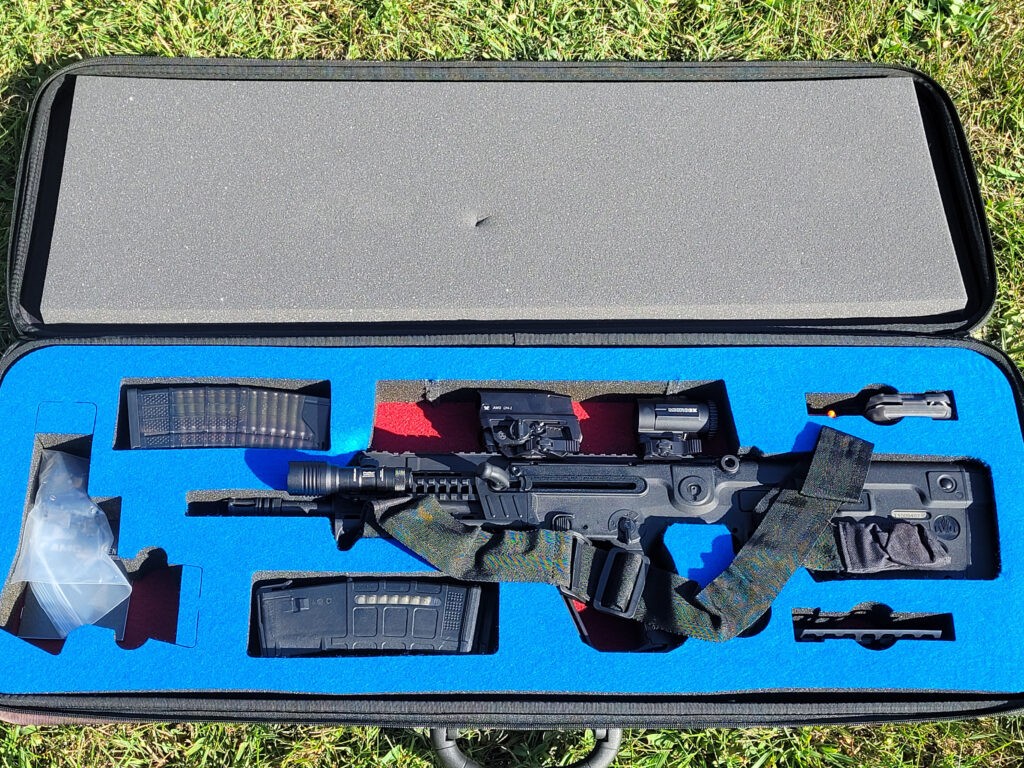
I’ve also found it is great with new shooters because of its weight further absorbing the already light recoil of the 5.56 round. The new shooters always want to get a photo with it.
So, It’s Still Here
Yep – I still have it. I tend to buy firearms, take them apart, maybe modify them, go to the range once or twice and then sell them. The Tavor X95 has been the exception so far. I bought it in 2021 and I’m writing this in August 2024. It was just on an outing with some family members that were new shooters from Canada and they all had fun with it.
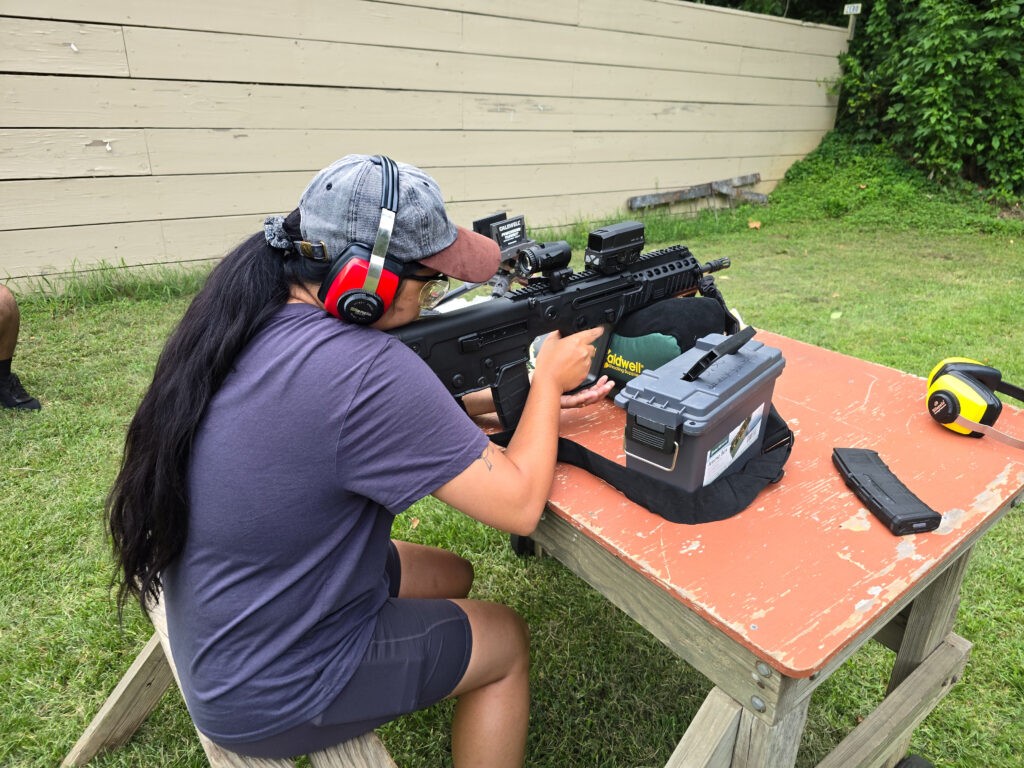
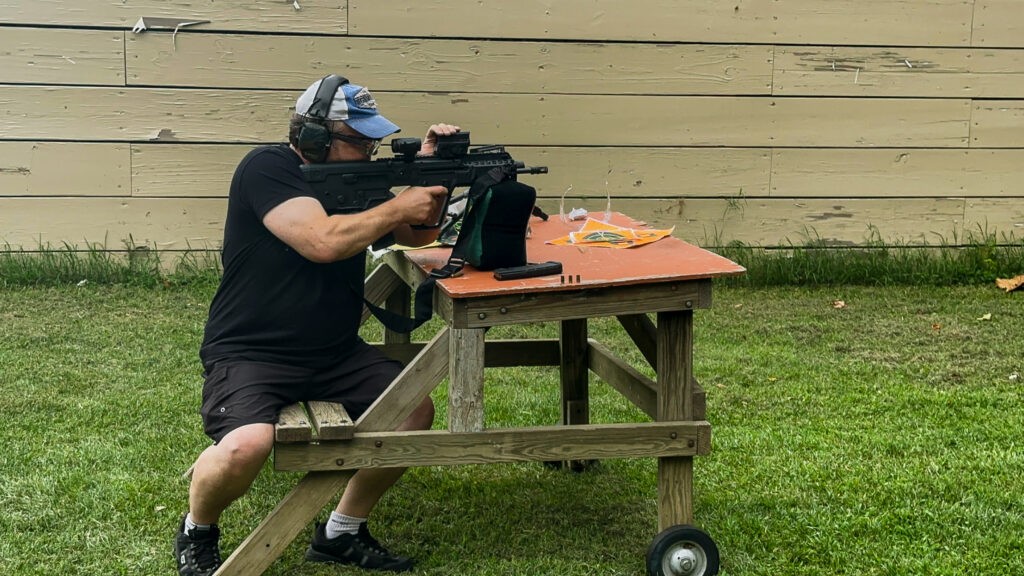
Summary
I’d say the Tavor X95 bullpup is primarily a close in weapon if you want to move up past 9mm but it also has the legs to reach out further. It has a steep learning curve and you can’t do a c-clamp grip. As the Israelis found – you might well be better off with an AR with whatever barrel length you prefer. Always assess your needs before you buy.
Would I recommend the Tavor X95 to people? Yes and mainly because of the unique design’s “wow” factor. I still tell people to think about how they want to use a firearm – the use case – and then buy accordingly. Without a doubt though, the Tavor X95 is cool, reliable and accurate.
I hope this helps you out.
Note, I have to buy all of my parts – nothing here was paid for by sponsors, etc. I do make a small amount if you click on an ad and buy something but that is it. You’re getting my real opinion on stuff.
If you find this post useful, please share the link on Facebook, with your friends, etc. Your support is much appreciated and if you have any feedback, please email me at in**@*********ps.com. Please note that for links to other websites, we are only paid if there is an affiliate program such as Avantlink, Impact, Amazon and eBay and only if you purchase something. If you’d like to directly contribute towards our continued reporting, please visit our funding page.
